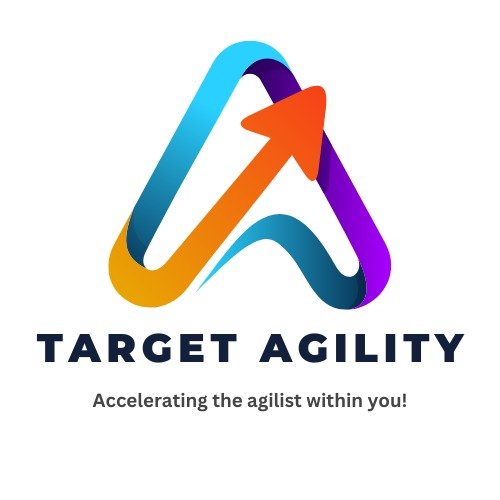RetroAI++ and the Future of Sprint Planning & Retrospectives

Agile teams are always under pressure to work faster, deliver more, and keep improving. That’s where RetroAI++ comes in—an AI tool built to help with Sprint Planning and Retrospectives. It promises smarter insights, quicker prep, and better follow-ups. But the big question is: is RetroAI++ a real game-changer, or just another shiny tool? What Is RetroAI++? RetroAI++ uses AI to help Scrum teams with their key ceremonies. It can: Basically, it’s like an assistant that organizes data and throws out suggestions. Sounds helpful, especially for busy Scrum Masters. But let’s break down where it works—and where it doesn’t. Where RetroAI++ Helps 1. Sprint Planning Prep It can highlight top backlog items, flag dependencies, and suggest team capacity. That means the team spends less time warming up and more time deciding. 2. Retro Pattern Spotting Instead of digging through notes, RetroAI++ can find repeated issues—like delays, blockers, or morale dips—and bring them up quickly. 3. Action Item Tracking Too often, retro action items get forgotten. RetroAI++ can remind teams and check whether changes are actually happening. 4. Less Admin Work Scrum Masters often waste time setting up boards or writing summaries. RetroAI++ can handle that, letting them focus on coaching and people instead of paperwork. Where RetroAI++ Fails But let’s be real—AI can’t replace people talking honestly. Here’s the danger zone: What the Future Looks Like RetroAI++ is just the start. More AI tools will show up in Agile rituals—spotting patterns, writing summaries, and nudging teams. That’s fine, but let’s not fool ourselves. AI can say, “Your velocity is dropping.” But only people can say, “We’re tired and need to slow down.”AI can flag testing delays. But only people can decide, “Let’s cross-train and fix this together.” Agile is about people, not patterns. How to Use RetroAI++ the Right Way Final Word RetroAI++ is useful—it cuts busywork, finds trends, and keeps action items on track. But if you treat it like a replacement for real discussion, you’re missing the point of Scrum. The future of Sprint Planning and Retrospectives isn’t about AI running the show. It’s about AI clearing the noise so humans can do the hard, meaningful work: trusting each other, speaking openly, and always improving. So go ahead and use RetroAI++. Just remember: AI can support Agile—but only people make it Agile.
Use Cases for Agile AI Agents: Are They Tools or Replacements?

AI agents are the new buzz in Agile. They can write backlog items, check sprint metrics, and even suggest improvements. Sounds powerful, right? But here’s the big question: are these agents just helpful tools, or are we pretending they can replace real team members? What Are Agile AI Agents? Unlike normal chatbots, AI agents don’t just answer questions. They can take actions, connect to tools, and automate tasks. In Agile teams, they’re being used to: At first glance, it feels like Scrum Masters and Product Owners just got an upgrade. But the truth is, AI agents are useful in some areas—and risky in others. Where AI Agents Help 1. Tidying Up the Backlog AI can suggest clearer acceptance criteria, spot duplicates, and group related stories. This saves Product Owners time. But— only humans know the customer’s real problems and company goals. AI doesn’t have that context. 2. Looking at Sprint Data AI is good at flagging numbers: slowing velocity, recurring spillover, or missed goals. It’s like having an extra analyst. But— numbers don’t explain why. AI doesn’t know about sick days, broken builds, or last-minute requests. 3. Retrospective Insights AI can scan surveys and say things like, “Collaboration came up in 40% of responses.” That’s useful as a starting point. But— retros are about people being honest and owning problems. AI can’t replace that conversation. 4. Knowledge Sharing AI can summarize past sprints, pull links to related tickets, or give new teammates quick background. Handy for onboarding. But— summaries leave out nuance. They’re shortcuts, not replacements for real experience. Where AI Becomes Dangerous The risk? Teams hide behind AI decisions. When results go bad, no one is accountable. That kills Agile. Tools, Not Replacements Here’s the blunt truth: Agile AI agents are tools—nothing else. They’re great for grunt work like cleanup, summaries, or data crunching. But they can’t replace human vision, judgment, or responsibility. Scrum Masters, Product Owners, and developers aren’t going anywhere. If you think AI can take their role, you’ve misunderstood both Scrum and AI. How to Use AI Agents the Right Way Final Word AI agents can save time and reduce busywork. But they’re not teammates. Agile depends on trust, discussion, and adaptability—things AI simply doesn’t have. So yes, use AI agents. Let them do the boring stuff. But keep the important thinking, decisions, and accountability where they belong: with humans. Tools, not replacements. Always.
AI in Scrum: Help or Harm?

AI is showing up everywhere in Scrum and Agile teams right now. People use ChatGPT to write user stories, generate acceptance criteria, or even run retrospectives. At first glance, it feels smart and efficient. But here’s the truth: most of the time, you’re just letting a statistical parrot into your team—and it’s quietly messing things up. What’s a “Statistical Parrot”? Big AI tools like ChatGPT don’t actually think. They don’t understand your customer, your business, or your sprint goal. They just predict the next word in a sentence, based on patterns in data. In short: they repeat things that sound right but often miss the real meaning. Scrum, however, is built on thinking, learning, and adapting. If your team starts leaning on AI to make choices, you’re swapping real insight for random predictions. That’s not agility—it’s fake speed. How AI Goes Wrong in Scrum 1. Bad Backlogs, Quickly Made Product Owners often use AI to write user stories. The backlog looks full and professional, but it’s usually shallow, repetitive, and disconnected from real customer needs. A backlog full of AI fluff only creates confusion and wasted sprints. 2. Empty Retrospectives Some teams let AI summarize feedback or suggest action items. But retrospectives are supposed to be about honesty, teamwork, and tough conversations. If you let a bot decide what matters, the team avoids reflection—and the chance to actually improve. 3. Fast but Pointless Work AI helps you write tasks, test cases, and documents faster. But if you’re rushing in the wrong direction, speed is useless. Scrum isn’t about how fast you work—it’s about creating real value. 4. Losing Human Skills Negotiating priorities, handling conflict, and thinking creatively are human skills. If you outsource too much of that to AI, your team gets weaker. Over time, you’ll lose the ability to think critically and work through problems together. Where AI Can Help I’m not saying AI has no place in Scrum. It does—but as a helper, not as a team member. It can save time by drafting templates, analyzing data, or suggesting options. But the real decisions, discussions, and accountability must come from humans. The Scrum Guide makes it clear: Scrum Teams are made of people. AI can assist, but it cannot replace teamwork, trust, or judgment. What Teams Should Do Instead Here’s the no-BS advice: Don’t Let the Parrot Lead Scrum works because of teamwork, courage, and real learning. A statistical AI parrot can’t do any of that—it just repeats patterns. If your team starts letting AI replace tough conversations and clear thinking, you’re not becoming “AI-powered.” You’re just covering up weak agility with shiny tech. Use AI, sure—but keep it in its place. Humans lead. Parrots repeat. Don’t confuse the two.
Ethical and Practical Implications of AI in Agile Roles

AI isn’t just a future idea—it’s already here, working in Agile teams every day. From organizing backlogs to generating sprint reports, tools like ChatGPT, Jira automation, and AI analytics are making work faster and more data-driven. But there’s a common misunderstanding: If AI can do all this, do we still need Product Owners or Scrum Masters? The truth is, yes, we do. AI can process information faster than any person, but it can’t replace human creativity, empathy, or ethical judgment. These human skills are still essential for Agile leadership. AI is great at practical tasks. It can rank backlog items based on value and risk, predict team speed using past work, create automated progress updates, and spot risks early. This is useful because it removes repetitive work, allowing people to focus on strategy and relationships. But deciding why a feature should be built, how it should change with the market, or how to solve a conflict still needs human thinking. For Product Owners, the role is more than keeping a list of features. They are the voice of the customer and the vision for the product. AI can suggest features, predict returns, and even write user stories, but it cannot truly understand human needs, balance competing demands, or make moral decisions. For example, AI might suggest a feature that keeps users on an app longer but takes advantage of addictive behavior. A human Product Owner can reject it because it goes against company values—AI has no moral compass unless we design it, and even then, ethics depend on the situation. For Scrum Masters, their role isn’t just running meetings. They lead by serving the team, protecting their well-being, and helping them improve. AI can look at data from past sprints, suggest process changes, and track workloads. But it can’t see when someone is stressed but staying quiet, help solve personal disagreements, or change its style based on the team’s emotions. Agile is about people, and that human connection is something AI can’t copy. As AI becomes a normal part of Agile, ethical responsibility becomes more important. Product Owners and Scrum Masters need to check AI’s recommendations for bias, make sure decisions can be explained, and keep control in human hands. Without human oversight, Agile risks becoming a system that values speed over sustainability and profit over people. The future isn’t about AI replacing humans—it’s about working together. AI should handle repetitive, data-heavy tasks, while humans focus on creativity, vision, and ethical choices. Agile leaders should also understand how AI works, not to build it, but to challenge and guide its results. AI will change Agile, but it won’t replace the people who make it human. Product Owners and Scrum Masters are still the moral guide, the creative driver, and the emotional support for their teams. Remove them, and you risk building the wrong product for the wrong reasons in a way that damages trust. Keep them, supported by AI, and you get both speed and heart.
AI Can Prioritize Product Backlogs Better Than Humans – Prove Me Wrong

Let’s be honest — most product backlogs are a mess. They’re filled with random ideas, old tasks no one remembers, tech debt, and pressure from different stakeholders. And somehow, the Product Owner is expected to sort it all out and decide what comes next. It’s a tough job. But now, AI tools are stepping in and claiming they can do it better — faster, with less bias, and based on real data. So, the big question is: can AI really prioritize better than a human? In many cases, the answer looks like a strong “yes.” Why It’s Hard for Humans to Prioritize Well Product Owners don’t just pick features from a list. They’re constantly pulled in different directions: Even when you use frameworks like RICE or MoSCoW to rank ideas, it often comes down to opinions and politics. People are emotional. Bias creeps in. We give in to pressure. We guess. That’s where AI starts to shine. What AI Can Do That Humans Struggle With AI doesn’t guess. It uses real data to make suggestions. Here’s how it helps prioritize more accurately: So, Is AI Better Than a Product Owner? Not completely. AI doesn’t understand your company’s long-term goals or how important a customer relationship is. It doesn’t know timing or strategy. It can’t take a big risk based on instinct. But here’s the truth: most backlog decisions aren’t about long-term vision. They’re about choosing what to build next. And that’s where AI helps — by removing the noise and giving you clear, data-backed suggestions. Think of it like a smart assistant. You still make the final call. But you’re no longer flying blind. Why Humans Still Lead (For Now) We still value human judgment — and we should. Some decisions go beyond what data can explain. Sometimes you need to take a bold step even if the numbers don’t support it yet. But for everyday decisions — like which bug to fix next or which feature will help most — AI can save hours of guessing and debating. Conclusion: Work Smarter, Not Harder AI isn’t here to replace Product Owners — it’s here to make them better. If you’re trying to manage a long backlog full of noise and pressure, AI can help you cut through the chaos and focus on what really matters. So yes, in many cases, AI can prioritize better than humans — especially when the human is tired, overwhelmed, or guessing. Don’t see it as a threat. See it as your smartest teammate. Still not convinced? Prove me wrong.
Automated Standups: The End of Daily Scrum as We Know It?

Daily Scrum meetings have been part of Agile for years. The goal is simple: help the team stay aligned, spot issues early, and plan the day. But let’s be honest — in many teams, daily standups feel boring, repetitive, or like a waste of time. Now, with AI and automation tools, some teams are skipping live meetings and using bots instead. This raises an important question: Do we still need live Daily Scrums? Or is automation a better option? Why We Have Daily Scrums Originally, the Daily Scrum was created to: It’s meant to be short (15 minutes) and helpful — not a long meeting or a status update for the manager. But in real life, things often go off track. People talk too much. Some stay silent. Others just show up out of habit. What Are Automated Standups? Automated standups use tools like Geekbot, Standuply, or DailyBot to collect daily updates. Team members answer three questions in writing: The tool gathers all answers and posts them in a team chat, like Slack or Teams. Some tools can also spot patterns — like recurring issues or signs of frustration. Benefits of Automated Standups Downsides of Using Bots So, Are Daily Standups Going Away? Not exactly — but they are changing. Automated standups work well for mature, remote teams who know how to stay focused and responsible. These teams don’t need a live meeting to stay in sync. For them, automation saves time and keeps things simple. But for new teams, teams with communication problems, or teams still learning Agile, bots alone won’t cut it. These teams need real interaction to build trust and stay connected. Conclusion Automated standups aren’t killing the Daily Scrum — they’re just changing how it’s done. For some teams, bots are a great way to save time and stay on track. For others, they could lead to silence, confusion, or lack of connection. In the end, it doesn’t matter whether you meet in-person, on Zoom, or through a Slack bot. What matters is that the team stays aligned, solves problems fast, and works toward the same goal. Choose the method that helps your team do that best.
Will AI Replace the Scrum Master? Here’s What the Data Really Tells Us

With artificial intelligence growing fast, a lot of people are asking a tough question: Will AI take over roles like the Scrum Master? It’s a fair concern. After all, many tasks that once needed humans are now done faster and cheaper by machines. But when it comes to Agile teams, things aren’t so simple. To understand the risk, we first need to get clear on what a Scrum Master actually does. This role isn’t just about running meetings or updating Jira boards. A good Scrum Master helps the team stick to Agile practices, guides daily standups, sprint planning, and retrospectives, clears roadblocks that slow progress, protects the team from distractions, and constantly looks for ways to improve how the team works. Some of these tasks are repetitive, structured, and easy to automate — which is exactly where AI is already stepping in. In today’s Agile teams, AI tools are doing a decent job handling things like automated standups, reporting, and backlog suggestions. Tools like Geekbot or Standuply can collect daily updates from team members and point out common blockers. ChatGPT-like systems can write summaries of retrospectives, generate reports, and even help rewrite vague user stories with clearer language and acceptance criteria. That’s not science fiction — it’s already happening. AI is absolutely reducing the manual workload for Scrum Masters. But that doesn’t mean the role is dead. There are still critical things AI can’t do — and probably won’t be able to for a long time. For example, AI can’t resolve team conflicts in a real, human way. It doesn’t understand workplace politics or team emotions. It won’t notice when your developers are burned out but hiding it. And it certainly won’t know how to coach a team that’s just going through the motions without real Agile mindset. If your team is 100% remote, doing repetitive work, and already well-organized, AI might reduce the need for a full-time Scrum Master. But remove the human element altogether? That’s not realistic — unless your Scrum Master is already just checking boxes. Let’s look at the numbers. A 2024 report from Gartner says that AI could handle 30% of Agile documentation and reporting by 2026. That’s a chunk, but it still leaves 70% of the job in human hands. A 2023 Scrum.org survey found that while 80% of Scrum Masters believe AI can help them, only 12% feel it threatens their job. Most see AI as a tool, not a threat. So what’s the real answer? No, AI won’t fully replace the Scrum Master. But yes — it will force Scrum Masters to level up. If all you do is run meetings and push updates, AI can and should replace you. But if you’re someone who leads, mentors, and drives change in your team, AI will actually make you more effective. Conclusion:AI is changing the game, but it’s not removing the players — at least not the ones who bring real value. The Scrum Master role is evolving, and only those who adapt will stay in the game. Learn to use AI, sharpen your people skills, and focus on the parts of the job no machine can do. If you don’t, it won’t be AI that replaces you — it’ll be someone who did both better.
Real-World Scrum Master Interview Questions

In 2025, companies expect Scrum Masters to do more than just follow the Scrum Guide. They want someone who can handle real challenges, guide teams through tough situations, and make Agile work in practice — not just theory. Here are 10 Scrum Master interview questions based on real-world situations. Each one tests how you think, how you act, and how you support your team in everyday work. 1. Your team always finishes sprints on time, but quality is poor. What would you do? This checks whether you focus on speed or quality. A good answer would explain how you encourage the team to improve quality by setting a clear Definition of Done, introducing automated testing, and using retrospectives to find and fix quality issues early. It’s not just about finishing tasks — it’s about doing them well. 2. The Product Owner wants to add a new task mid-sprint, and the team agrees. What’s your role? This tests how well you protect the team’s focus. Your answer should show that you respect team collaboration but remind them that the sprint goal shouldn’t constantly change. Suggest handling the new request in the next sprint unless it’s urgent — and explain how to discuss it during planning or review sessions. 3. One team member talks a lot in meetings while others stay quiet. How do you handle it? This checks your facilitation skills and how you create a safe environment. Talk about using structured methods like going around the room for input, silent brainstorming, or timeboxing speakers. Explain how you coach the team to be more balanced and respectful of everyone’s voice. 4. The team meets sprint goals, but stakeholders are still not happy. What would you do? Here, the focus is on value over output. Your answer should explain how you’d bring stakeholders into the process earlier, through planning, reviews, or backlog discussions. You want to make sure the work meets real customer needs, not just internal goals. 5. The team regularly misses their sprint commitments. How would you help? This question looks at how you support improvement. A good answer includes using retrospectives to find the root causes, adjusting sprint planning techniques, limiting work-in-progress, and improving estimations based on real data. The goal is learning and growing, not blaming. 6. A manager wants daily updates from the team. How would you respond? This checks how you handle pressure from traditional management styles. Explain that Agile provides transparency through tools like dashboards or burndown charts, and that managers can join sprint reviews or stand-ups. Suggest a better way to stay informed without interrupting the team’s flow. 7. The team says retrospectives are a waste of time. What do you do? This shows how you coach teams to find value in continuous improvement. Talk about making retrospectives more engaging, tracking action items, and celebrating what gets better over time. Sometimes all it takes is a new format or fresh perspective to make them useful again. 8. Two teams are working on the same product but aren’t aligned. How would you fix it? This tests how you handle coordination across teams. Share how you’d introduce things like a Scrum of Scrums, shared planning sessions, or cross-team reviews. If you’re familiar with frameworks like SAFe or Nexus, mention how they help align multiple teams. 9. A team member doesn’t follow Scrum practices and refuses to change. How would you handle it? Here, the interviewer wants to see how you manage conflict. A good approach would be to talk privately with the person to understand their concerns. Use one-on-one coaching and bring in team working agreements to rebuild shared expectations. 10. You join a team with a history of failed Agile efforts. What’s your first step? This checks your leadership and change management skills. Talk about observing first, listening to the team, building trust, and identifying small wins. The idea is not to force change, but to guide the team toward improvement at their pace. Want more similar questions ? 👉 Click Here Wrapping Up These interview questions go beyond textbook Scrum. They test how well you deal with real situations — conflicts, confusion, change, and pressure. To stand out in interviews, focus on your own experiences. Share real examples, explain what you did, what happened, and what you learned. Show that you’re not just a facilitator, but a coach, a listener, and a guide who helps teams get better every day.
SAFe in Government and Regulated Industries

Agile practices like Scrum are becoming more common in government offices and highly regulated industries like healthcare, banking, and defense. But many people still think Agile can’t work in these areas because of strict rules, documentation, and long approval processes. That’s where SAFe (Scaled Agile Framework) helps. SAFe lets large organizations use Agile while still meeting compliance needs, delivering high-quality products, and keeping everyone aligned. In 2025, more and more regulated businesses are realizing that Agile and compliance can work together. Why These Industries Need SAFe Government and regulated industries often rely on old ways of working—long planning cycles, strict approvals, and fixed budgets. This slows down delivery and increases the chance of delivering outdated or low-value solutions. SAFe helps by offering: SAFe modernizes the system without removing control. SAFe Practices That Work Well in Regulated Fields Common Problems and How to Solve Them Problem: “Agile = No Control” Some think Agile means chaos. But SAFe has clear plans, roles, and responsibilities. In fact, it improves visibility for leaders. ✅ Tip: Use SAFe roles like Product Manager or Release Train Engineer to track work and report updates. Use Lean Portfolio Management (LPM) for managing funding and approvals. Problem: “We Need Documentation” Agile avoids over-documenting, but regulated industries must keep records. ✅ Tip: Use Agile tools like Jira Align to keep digital records of everything—requirements, changes, tests, and decisions. This meets documentation rules without wasting time. Problem: “Our People Don’t Want to Change” Government teams and large enterprises may be used to top-down control and fixed plans. ✅ Tip: Start small with a pilot Agile Release Train (ART), show the results, and train leaders. Change becomes easier when people see the benefits. Real-Life Example A national health department wanted to upgrade its tech systems while meeting strict health data laws. Using SAFe, they delivered working updates every 8 weeks instead of waiting a full year. Compliance was tracked in real time using Agile tools, and feedback was gathered early. This saved time, reduced risk, and met legal needs—all while delivering faster. Tips for Success in Regulated Settings Final Thoughts SAFe helps regulated industries become faster and more flexible while still following the rules. It gives teams the tools they need to build, test, and deliver valuable work without skipping important steps like compliance, audit, and reporting. With the right setup, even government and tightly regulated industries can become Agile—not by ignoring the rules, but by working smarter within them.
Top Scrum Master Interview Questions – Fresh, Real-World Scenarios to Expect

In 2025, the role of a Scrum Master goes far beyond managing stand-ups or tracking velocity. Companies now expect Scrum Masters to act as team coaches, change leaders, and business partners. But most blogs still list the same old interview questions year after year. If you’re preparing for a Scrum Master interview this year, it’s time to focus on what’s really being asked in the real world—questions that reflect today’s hybrid work setups, evolving Agile practices, and the growing push for business results over process checklists. Here are 10 thoughtful and up-to-date questions you’re more likely to hear in a 2025 Scrum Master interview—along with why they matter and how to think about your answers. 1. How do you help a team stay Agile while also meeting compliance rules or audit needs? Why it’s important: Many industries (like finance or healthcare) have strict rules. Teams need to be flexible and still follow them. What to say: Talk about helping teams document the right things (like Definition of Done) and work closely with compliance teams without slowing down their delivery. Share how you found balance between following rules and staying Agile. 2. Tell me about a time you had to simplify a scaled Agile setup because it wasn’t working. Why it’s important: Companies often jump into SAFe or other frameworks too early, which can create more problems than it solves. What to say: Share a story where things got too complicated and you helped reduce overhead—maybe by focusing on smaller team coordination or cutting out extra ceremonies. Show that you can tailor Agile, not just follow it. 3. How do you recognize signs of burnout in a team, and how do you respond? Why it’s important: Well-being matters more than ever, especially in remote or high-pressure environments. What to say: Mention signs like low engagement, repeated missed goals, or team tension. Talk about how you create space for open conversation and promote a healthy work rhythm. 4. What would you do if a Product Owner keeps changing priorities during the sprint? Why it’s important: Teams need focus to deliver. Constant changes hurt that. What to say: Talk about coaching the PO on respecting the sprint plan and educating stakeholders on the cost of switching. Mention how you work with the team and PO to build trust and improve planning. 5. How do you encourage accountability without just relying on numbers like velocity? Why it’s important: Teams need to take ownership, but not feel like they’re being judged by data alone. What to say: Share how you encourage team-owned commitments, promote shared responsibility, and focus on continuous improvement. Mention retrospectives, working agreements, or visual tools like Kanban boards. 6. How do you run Agile meetings differently for remote, hybrid, or in-person teams? Why it’s important: Most teams are no longer working from the same location. What to say: Explain how you use digital tools, vary your facilitation style, and ensure everyone’s voice is heard. Talk about being flexible with formats to keep meetings engaging and useful. 7. Have you ever used storytelling to help a team or stakeholder understand something better? Why it’s important: People remember stories more than charts or rules. What to say: Give an example of when you used a story, analogy, or real-life situation to explain Agile or influence a decision. Show that you can connect with people, not just process. 8. How do you make sure your team’s work aligns with company goals or OKRs? Why it’s important: Teams need to see how their work supports the bigger picture. What to say: Talk about involving the team in PI planning, reviewing OKRs during backlog grooming, or creating sprint goals tied to outcomes. Show how you help the team focus on value. 9. Have you worked with Agile teams outside of IT, like in HR or marketing? What did you learn? Why it’s important: Agile is spreading to all parts of the business. What to say: Share how you helped non-tech teams get started with Agile principles. Maybe you introduced simple Kanban boards, daily stand-ups, or retrospectives. Emphasize how you adjusted your style for their unique needs. 10. If your team meets all sprint goals, but stakeholders still aren’t happy—what would you do? Why it’s important: Delivering everything planned doesn’t always mean you delivered the right thing. What to say: Talk about how you’d improve communication with stakeholders, ensure the backlog reflects real value, and use reviews or demos to gather better feedback. Show that you care about customer satisfaction, not just internal metrics. Why These Questions Matter in 2025 Scrum Master interviews today are about more than the Scrum Guide. Employers want someone who can: If you’re preparing, go beyond the basics. Reflect on real stories from your experience, your approach to tough situations, and how you help teams succeed—not just follow process. Want more similar question 👉 Click here Conclusion Being a Scrum Master in 2025 means wearing many hats: coach, guide, facilitator, problem-solver, and change agent. Interviewers want to know how you think, support people, and bring real value to the organization. So practice answering questions like these with stories from your work. Focus on how you solve problems, guide teams, and grow as a leader. That’s how you’ll stand out and show you’re ready for the future of Agile.
Top Scrum Master Interview Questions in 2025 (With Tips)

The role of a Scrum Master has grown significantly in recent years. It’s no longer just about running stand-ups or facilitating retrospectives. In 2025, organizations expect Scrum Masters to guide teams, influence leadership, drive agile transformation, and sometimes even understand AI-driven workflows. If you’re preparing for a Scrum Master interview, it’s essential to go beyond textbook answers. Here are the top Scrum Master interview questions being asked in 2025 — and what interviewers are really looking for. 🔹 1. How do you handle resistance to Agile from senior leadership? Why they ask: Companies still struggle with top-down resistance to Agile. Interviewers want to know if you can communicate value to leadership without creating conflict. Pro Tip: Share real-life examples, and talk about how you used metrics, workshops, or pilot teams to earn buy-in. 🔹 2. What metrics do you use to measure team performance in Scrum? Why they ask: Velocity alone is no longer enough. Modern teams focus on value, predictability, and team health. Answer Tip: Mention cycle time, lead time, escaped defects, team happiness, and sprint goal success. Explain why you choose specific metrics based on the team’s maturity. 🔹 3. How do you coach a team that’s doing Scrum only in name (ScrumBut)? Why they ask: Many teams adopt Scrum ceremonies without embracing Agile principles. Pro Tip: Talk about helping teams understand the “why” behind Scrum, running workshops, or improving cross-functional collaboration. 🔹 4. How do you facilitate remote or hybrid sprint events effectively? Why they ask: Remote work is still the norm in many industries in 2025. What to include: Tools (like Miro, Zoom, Mural, or Slack), time-boxing, rotating facilitators, and strategies for inclusive participation. 🔹 5. What’s the biggest mistake you made as a Scrum Master, and what did you learn? Why they ask: Self-awareness and growth mindset are critical. Answer Tip: Be honest. Reflect on what went wrong and how you handled it. This shows maturity and continuous improvement. 🔹 6. How do you handle a Product Owner who micromanages the team? Why they ask: Collaboration between PO and team can make or break productivity. What to say: Talk about facilitating boundary-setting conversations, clarifying roles, and encouraging trust-based collaboration. 🔹 7. How do you support a team that is consistently missing sprint goals? Why they ask: They want to see your coaching and problem-solving skills. Best approach: Explain how you might explore root causes (overcommitment, unclear stories, lack of focus), facilitate retrospectives, and help the team recalibrate expectations. 🔹 8. What’s your approach to handling team conflict? Why they ask: Conflict is normal. Interviewers want to know if you can manage it constructively. Answer Tip: Mention active listening, 1-on-1s, root cause analysis, and creating psychologically safe environments. 🔹 9. How do you balance servant leadership with delivery pressure from stakeholders? Why they ask: This question tests your leadership style and stakeholder management. What to say: Show that you protect the team’s focus, manage stakeholder expectations, and act as a bridge—not a barrier—between delivery and agility. 🔹 10. How do you stay up-to-date with Agile trends and practices? Why they ask: Continuous learning is key for any good Scrum Master. Pro Tip: Mention following thought leaders on LinkedIn, attending meetups, reading blogs (like Scrum.org, Agile Alliance), or completing certifications like PSM II or SAFe. Conclusion In 2025, being a Scrum Master is about more than frameworks and rituals. It’s about agile leadership, emotional intelligence, communication, and adaptability. Employers look for real-world experience, the ability to coach teams, and a mindset focused on continuous improvement. If you’re preparing for an interview, don’t just memorize answers — reflect on your real experiences. Interviewers want authenticity, not theory. Want more questions <<click here>>
SAFe 6.0 Updates in 2025 – What’s New and What’s Old

The Scaled Agile Framework (SAFe) helps large companies manage their agile practices across many teams. In 2025, SAFe 6.0 has been updated with new ideas to match today’s fast-changing world. With AI, changing markets, and remote work, SAFe has made some big changes. Let’s look at what’s new and what’s no longer recommended. ✅ What’s New in SAFe 6.0 (2025) 1. Using AI to Help Make Decisions SAFe now supports using artificial intelligence (AI) and data tools to make better and faster decisions. This includes things like automatically prioritizing work and predicting delays. What this means: Teams can use tools like dashboards and AI to plan more effectively. 2. More Focus on the Customer SAFe is encouraging teams to stay closer to their customers. This includes using design thinking, empathy mapping, and gathering feedback regularly. What this means: Product Owners and team leads should spend more time talking to customers and understanding their needs. 3. Teams Make More Decisions SAFe now promotes team-level decision-making, instead of waiting for approvals from top management. What this means: Agile Release Trains (ARTs) can make faster decisions and respond more quickly to change. 4. Flexible Budgets Instead of setting a yearly budget, SAFe supports dynamic funding. This means money can be moved based on progress and changing needs. What this means: Leaders need to be ready to adjust funding regularly instead of sticking to a fixed plan. 5. New Skill: Agile Resilience A new skill called Agile Resilience has been added. This focuses on helping teams stay strong and flexible during tough times or big changes. What this means: Leaders should now support both productivity and emotional well-being. 🗑️ What’s Outdated or Less Useful Now ❌ 1. Too Many Fixed Roles Earlier versions of SAFe gave strict definitions to roles like Scrum Master or RTE. Now, SAFe says it’s better to adjust roles to fit your company’s needs. Why this changed: Too many rigid roles slowed teams down and caused confusion. ❌ 2. Strict Portfolio Control Older SAFe versions required tight control at the top levels. The 2025 update supports lean governance, where teams are trusted to make decisions. Why this changed: Too much control reduced speed and team motivation. ❌ 3. Annual Planning Events SAFe is moving away from once-a-year PI planning. Instead, it encourages shorter and more frequent planning, sometimes done online or in small sessions. Why this changed: In today’s fast-paced world, yearly plans become outdated quickly. 👉 What Should You Do Now? If you’re using SAFe in your organization, this is a good time to: SAFe 6.0 in 2025 is more than a framework. It’s a guide to running modern, flexible, and customer-focused organizations. Conclusion Agile isn’t just a set of steps anymore—it’s a mindset. The 2025 updates to SAFe 6.0 push companies to be more flexible, customer-focused, and tech-savvy. The teams that adapt to these changes will lead the way in their industries.
Agile Coaching vs Scrum Mastering – Simple Roles, Big Impact

In Agile teams, two roles are often talked about a lot: the Scrum Master and the Agile Coach. Both help teams work better, deliver value faster, and improve over time. But they do different things, and understanding how they work can really help your team and company succeed. Let’s look at what each role does, how they are different, and how they can work together to create real change. What is a Scrum Master? A Scrum Master helps a team follow the Scrum process. They make sure the team understands Agile values and uses Scrum the right way. Here’s what a Scrum Master usually does: The Scrum Master doesn’t “boss” the team around. Instead, they serve the team — helping them grow, solve problems, and deliver better work. That’s why this role is called a servant leader. What is an Agile Coach? An Agile Coach works at a bigger level. Instead of helping just one team, they help many teams or even the whole company. Agile Coaches: Agile Coaches are like mentors or guides who help a company truly become Agile—not just follow the rules, but change how they think and work. Key Differences Area Scrum Master Agile Coach Focus One team Many teams or whole company Goal Help the team follow Scrum Help the company become more Agile Type of Leader Servant leader Change leader Main Job Day-to-day team support Coaching, training, and big-picture guidance Tools Scrum events and team help Workshops, training, coaching leaders When Should You Use Each? Sometimes, Scrum Masters grow into Agile Coaches as they gain more experience and start working with more teams. How They Work Together The best results come when Scrum Masters and Agile Coaches work as a team. Together, they bring both strong teamwork and big-picture change to the organization. Conclusion Scrum Masters and Agile Coaches are both important. They don’t replace each other — they support each other. Scrum Masters focus on helping teams work better. Agile Coaches focus on helping the whole organization grow and adapt. Both roles help create a work culture where teams can learn, improve, and succeed. By understanding their roles and working together, companies can go beyond just “doing Agile” — and start truly living Agile every day.
The Role of Leadership in Agile Adoption (Made Simple)

Agile is more than just a process or a set of meetings. It’s a way of thinking and working that helps teams deliver better results, faster. But for Agile to really work, it needs support from the top. That’s why leadership plays such an important role in Agile adoption. In this blog, let’s look at how leaders help teams succeed with Agile — and what can go wrong if leadership isn’t involved. Why Leaders Are Important in Agile When a company decides to “go Agile,” it usually means changing how teams work. But these changes don’t just happen on their own. Teams need support, guidance, and encouragement. That’s where leaders come in. Without strong leadership, Agile can easily turn into just a buzzword. Teams may go through the motions, like holding stand-up meetings, but never truly see the benefits of Agile — such as faster feedback, better teamwork, or happier customers. What Great Agile Leaders Do 1. Share a Clear Goal Good leaders explain why the company is adopting Agile. Is it to deliver faster? Improve quality? Respond quickly to market changes? When teams understand the purpose, they feel more motivated and focused. 2. Show Agile Behaviors Themselves Leaders must lead by example. That means: When leaders act this way, teams are more likely to follow and build trust. 3. Make Teams Feel Safe Agile teams need to feel safe to try new things, ask questions, and make mistakes. Great leaders create a safe environment where learning is more important than blame. This helps teams grow and improve. 4. Remove Problems That Block Progress Sometimes, teams want to work in an Agile way but face issues — like outdated rules, long approval processes, or too many meetings. Agile leaders step in and help solve these problems. They don’t just tell teams to go faster — they remove the things slowing them down. 5. Support Learning and Growth Agile is a journey. Teams need time, training, and support to get better. Good leaders: When leaders invest in people, teams become stronger and more confident. What Happens If Leadership Is Missing? When leaders don’t support Agile properly, a lot can go wrong: In short, without leadership, Agile doesn’t last. Conclusion Adopting Agile isn’t just a team-level change — it’s an organization-wide shift. And that shift has to start with leadership. Leaders must do more than just say, “Let’s be Agile.” They must act in Agile ways, support their teams, remove barriers, and create a culture where learning and improvement are welcome. When leaders take an active role, Agile has a much better chance of working — and teams can truly thrive. If you’re a leader thinking about Agile, remember: you don’t need to know everything. But you do need to care, support your teams, and keep learning along the way.
What Makes a Great Scrum Master (and What Doesn’t)

In Agile teams, the Scrum Master plays an important role. They help the team follow the Scrum process and make sure things run smoothly. But being a great Scrum Master is about much more than just organizing meetings. So, what makes someone truly great at this role? And what should they avoid? Let’s break it down. What Makes a Great Scrum Master 1. They Put the Team First A great Scrum Master is a servant leader. That means they don’t act like a boss. Instead, they support the team, help remove obstacles, and make sure everyone can do their best work. They focus on what the team needs — not what they want to control. 2. They Know Scrum Well (and Use It Wisely) A good Scrum Master understands the rules of Scrum — like how to run stand-ups, sprint planning, and retrospectives. But they also know that Scrum is just a tool. They use it in a smart way that fits the team, rather than following the rules blindly. 3. They Help Meetings Run Smoothly Instead of talking all the time or telling others what to do, a great Scrum Master facilitates meetings. That means they make sure everyone has a voice, the meetings stay focused, and the team gets the most out of each discussion. 4. They Protect the Team Outside distractions can slow a team down — like last-minute tasks from managers or interruptions during sprints. A great Scrum Master keeps those distractions away so the team can stay focused and finish what they planned. 5. They Coach and Guide The best Scrum Masters are also coaches. They help team members grow, teach Agile practices, support the Product Owner, and even help other departments understand how Scrum works. They make the whole organization better. What Doesn’t Make a Great Scrum Master 1. Being a Micromanager If a Scrum Master tries to control every detail or tells people how to do their jobs, it’s a problem. Scrum teams should organize their own work. A controlling Scrum Master slows the team down and lowers motivation. 2. Being a Rule Enforcer Some Scrum Masters focus only on rules and processes. They act like “Scrum police.” This doesn’t help teams grow or improve. A great Scrum Master explains why Scrum practices matter and helps the team use them in a helpful way. 3. Using the Same Approach for Every Team Every team is different. What works for one might not work for another. A great Scrum Master listens to the team and adjusts their style based on what the team needs. A one-size-fits-all approach doesn’t work in Agile. 4. Ignoring Stakeholders While focusing on the team is important, a Scrum Master also needs to work with others — like Product Owners, managers, and customers. A great Scrum Master builds good relationships outside the team to support communication and collaboration. 5. Not Growing or Learning Agile is all about learning and improving. A Scrum Master who isn’t learning new things or reflecting on how to improve may fall behind. Great Scrum Masters read, take courses, talk to other Agile professionals, and keep growing. In Conclusion A great Scrum Master supports the team, understands Scrum, handles problems quietly, and helps the team and organization grow. They don’t control the team — they empower them. They don’t just follow rules — they guide the team with purpose. A not-so-great Scrum Master might do too much, follow rules without thinking, or forget that people come first. If you’ve worked with a great Scrum Master, you know how valuable they are. If not — now you know what to look for.
Building Psychological Safety in Scrum Teams

In Scrum teams, success isn’t just about using the right tools or following the right steps. It’s also about making sure everyone on the team feels safe to share their thoughts, ideas, and even their mistakes. This feeling of safety is called psychological safety. When a team has it, everyone can do their best work. So, how can you build psychological safety in your Scrum team? Let’s break it down. What is Psychological Safety? Psychological safety means that team members feel okay speaking up. They don’t worry about being blamed, judged, or embarrassed if they share their opinions or if they make a mistake. This is really important for Scrum teams because Scrum is all about teamwork, talking openly, and learning from mistakes. If people feel unsafe to speak up, problems go unnoticed, and great ideas stay hidden. Why It’s Important in Scrum Scrum teams need to adapt and work together fast. Here’s why psychological safety helps: ✅ Better teamwork: Everyone can share what they know, so the team makes smarter choices.✅ Learning faster: Mistakes are seen as lessons, not failures.✅ More ownership: When people feel safe, they care more about the team’s success.✅ Happier teams: A safe, supportive environment makes people feel good about their work. Steps to Build Psychological Safety Here are simple things you can do to make your team feel safe: 1️⃣ Be a Role Model If you’re a Scrum Master, Product Owner, or team lead, show that it’s okay to not have all the answers. If you make a mistake or don’t know something, say so! This shows everyone that it’s normal to be honest and open. 2️⃣ Encourage Everyone to Speak In Scrum meetings like Sprint Planning, Daily Stand-ups, Reviews, and Retrospectives, make sure everyone has a chance to talk. Ask: This shows that everyone’s input matters. 3️⃣ Be Curious, Not Critical When someone shares an idea or concern, don’t jump in to judge or shut it down. Instead, ask questions to learn more: This way, people feel safe to keep sharing. 4️⃣ Celebrate Ideas and Learn from Mistakes Thank people when they share ideas, even if they’re small. Celebrate little successes, too. And if there’s a mistake, talk about what you learned from it—not who’s to blame. For example, in Retrospectives, ask “What can we learn from this?” instead of “Who made the mistake?” 5️⃣ Keep Checking In Psychological safety doesn’t happen overnight—it’s something to keep working on. Scrum Masters can ask in Retrospectives: This helps you keep improving as a team. The Scrum Master’s Job The Scrum Master has a big role in building psychological safety. They help protect the team from outside pressure, guide everyone to work together, and make sure all voices are heard. By showing kindness and curiosity, the Scrum Master helps build trust in the team. Conclusion Psychological safety isn’t just something nice—it’s needed for Scrum teams to succeed. When people feel safe to share, they come up with better ideas, help each other out, and make the team stronger. By leading by example, making sure everyone’s voice is heard, and talking about how the team can keep improving, you can build a safe and supportive Scrum team. And when your team feels safe, they’ll be ready to do their best work—together.
The Future of Agile in Large Organizations

Agile started as a way for small software teams to move faster and create better products. But now, big companies with thousands of employees are trying to use Agile, too. This isn’t always easy—large organizations have lots of teams, managers, and processes that can slow things down. So, what does the future look like for Agile in these big companies? Let’s take a look. The Challenges of Doing Agile at Scale In smaller teams, Agile can work well because everyone is close and decisions happen quickly. But in big companies, there are many levels of managers and different departments. This can make it harder to bring Agile to life. One challenge is that people don’t always like change. Some managers are used to telling people exactly what to do. Agile, though, is about letting teams organize themselves and work together. This change can feel uncomfortable. That’s why making Agile work in large companies takes more than just new rules—it needs a new way of thinking. Scaling Frameworks: SAFe, LeSS, and More To help big companies use Agile, there are special frameworks designed for large teams: These frameworks can help, but they’re not magic. Each company has to adapt them to fit their own ways of working. Beyond IT: Agile for Everyone Agile isn’t just for software teams anymore. Big companies are using Agile in other departments, too—like marketing and HR. This helps everyone work together better and focus on customers. In the future, we’ll see Agile ideas—like working in small steps and getting feedback fast—spread throughout big companies. This can make the whole company faster and more flexible. Using Data and Technology New technology is also shaping the future of Agile. Tools like Jira or Trello help teams track their work and stay organized. But soon, data will play an even bigger role. For example, teams can look at data about how fast they’re working or where they’re getting stuck. This helps them improve and make better decisions. AI and automation might also help by handling boring tasks and showing where teams can speed up. Changing How Leaders Lead For Agile to really work in big companies, leaders need to change, too. In the past, leaders mostly told people what to do. Now, they need to focus on helping teams succeed—by removing obstacles and building trust. This new style of leadership is called servant leadership. Leaders who do this support their teams and help them do their best work. What’s Next? The future of Agile in big companies isn’t about using one single framework or tool. It’s about creating a culture where teams are always improving and thinking about what customers need. It’s about helping teams work well on their own and making sure everyone is moving in the same direction. Big companies that can truly embrace Agile will be able to move faster, make better products, and stay ahead of the competition. Conclusion Agile’s future in big companies looks promising—but it takes effort. Using the right frameworks, embracing data and technology, and focusing on teamwork and trust will make a real difference. When done well, Agile can become more than a process. It can become part of how the whole company works and grows.
How to Prioritize Backlog Items When Everything Feels Urgent

How to Prioritize Backlog Items When Everything Feels Urgent As a Product Owner, it’s common to feel overwhelmed by a never-ending backlog full of features, bug fixes, and ideas. It can seem like everything is a top priority! But if you try to do it all, you risk getting stuck or working on the wrong things. Here’s a straightforward way to decide what to focus on first. 🟠 Start with Your Product Vision Before sorting your backlog, take a step back and think about your product vision. What are you trying to achieve? If an item doesn’t help you reach your product goals, it’s probably not urgent. Make sure your team and stakeholders know this vision so you’re all on the same page. 🟠 Use a Framework to Make Decisions Instead of guessing, use a simple framework to help you sort priorities. Here are some examples: Using a framework keeps you from relying only on opinions. 🟠 Think About Value vs. Effort Not all tasks are equal. A big idea might be great for users, but if it takes forever to build, it may not be worth it right away. A Value vs. Effort matrix can help: This way, you spend time on the most impactful work. 🟠 Get Input from Stakeholders—But Set Boundaries Stakeholders will always have opinions about what’s most important. Listen to them, but don’t let them take over your prioritization process. Hold regular backlog refinement sessions where you explain your decisions and show data to support them—like customer feedback or usage stats. Being open about how you decide builds trust, even when you can’t do everything they ask for right away. 🟠 Review and Adjust Often Prioritization isn’t just a one-time job. Customer needs, market conditions, and technology all change. That’s why it’s important to review your backlog regularly—ideally once a sprint. Adjust priorities so you’re always working on what matters most. 🟠 Don’t Forget Technical Work It’s tempting to skip technical debt and bug fixes when you’re under pressure. But if you keep ignoring them, they’ll slow down your progress later. So make sure to set aside time for technical improvements alongside new features. 🟠 Be Ready to Say “No” (or “Not Yet”) Sometimes, you have to say “no” or “not yet.” Trying to do everything at once is a fast track to burnout and low-quality work. If you’re clear about why you’re saying no—like focusing on customer value and your product vision—people will understand. Final Thoughts When your backlog is packed and everything feels urgent, take a step back. Remember your product vision, use a simple framework to decide what matters, and involve your team and stakeholders without losing focus. Balance quick wins with strategic investments, keep your tech healthy, and don’t be afraid to say no. This approach will help you cut through the clutter and move your product forward with confidence. As a Product Owner, it’s common to feel overwhelmed by a never-ending backlog full of features, bug fixes, and ideas. It can seem like everything is a top priority! But if you try to do it all, you risk getting stuck or working on the wrong things. Here’s a straightforward way to decide what to focus on first. Start with Your Product Vision Before sorting your backlog, take a step back and think about your product vision. What are you trying to achieve? If an item doesn’t help you reach your product goals, it’s probably not urgent. Make sure your team and stakeholders know this vision so you’re all on the same page. Use a Framework to Make Decisions Instead of guessing, use a simple framework to help you sort priorities. Here are some examples: Using a framework keeps you from relying only on opinions. Think About Value vs. Effort Not all tasks are equal. A big idea might be great for users, but if it takes forever to build, it may not be worth it right away. A Value vs. Effort matrix can help: This way, you spend time on the most impactful work. Get Input from Stakeholders—But Set Boundaries Stakeholders will always have opinions about what’s most important. Listen to them, but don’t let them take over your prioritization process. Hold regular backlog refinement sessions where you explain your decisions and show data to support them—like customer feedback or usage stats. Being open about how you decide builds trust, even when you can’t do everything they ask for right away. Review and Adjust Often Prioritization isn’t just a one-time job. Customer needs, market conditions, and technology all change. That’s why it’s important to review your backlog regularly—ideally once a sprint. Adjust priorities so you’re always working on what matters most. Don’t Forget Technical Work It’s tempting to skip technical debt and bug fixes when you’re under pressure. But if you keep ignoring them, they’ll slow down your progress later. So make sure to set aside time for technical improvements alongside new features. Be Ready to Say “No” (or “Not Yet”) Sometimes, you have to say “no” or “not yet.” Trying to do everything at once is a fast track to burnout and low-quality work. If you’re clear about why you’re saying no—like focusing on customer value and your product vision—people will understand. Conclusion When your backlog is packed and everything feels urgent, take a step back. Remember your product vision, use a simple framework to decide what matters, and involve your team and stakeholders without losing focus. Balance quick wins with strategic investments, keep your tech healthy, and don’t be afraid to say no. This approach will help you cut through the clutter and move your product forward with confidence.
Scrum Master Mistakes to Avoid: Common Anti-Patterns

Being a Scrum Master isn’t always easy. Even experienced Scrum Masters can fall into habits that seem helpful but actually hold the team back. These habits are called anti-patterns—they go against the purpose of Scrum. Let’s take a look at some common Scrum Master mistakes and how you can avoid them. 1. Being the Team’s Secretary What Happens:You end up scheduling meetings, writing notes, and updating task boards—all the time. Why It’s a Problem:The team becomes dependent on you and doesn’t learn to manage themselves. What to Do Instead:Let the team take ownership. Encourage them to update Jira and run parts of meetings. You’re there to guide, not to do everything. 2. Talking Too Much in Meetings What Happens:You lead every meeting, answer all questions, and fill every pause with your own input. Why It’s a Problem:Team members stop sharing ideas or speaking up. What to Do Instead:Ask open questions and let others lead. Stay quiet sometimes—give space for the team to think and talk. 3. Not Protecting the Team What Happens:Stakeholders interrupt the team, or urgent work gets pushed into the sprint at the last minute. Why It’s a Problem:The team loses focus and trust in the sprint plan. What to Do Instead:Say no to interruptions. Help the Product Owner push work to the next sprint. Explain why focus matters. 4. Micromanaging Like a Project Manager What Happens:You assign tasks or track who’s doing what. Why It’s a Problem:The team stops taking responsibility and starts waiting for direction. What to Do Instead:Let the team choose how to do their work. You support them by removing blockers and improving the process. 5. Ignoring Company-Wide Problems What Happens:You only focus on your team and don’t try to fix bigger issues. Why It’s a Problem:Bigger blockers like poor tools or cross-team delays slow down progress. What to Do Instead:Help fix problems beyond the team. Connect with other teams, raise issues, and push for system improvements. 6. Skipping Retrospectives What Happens:You cancel or rush retrospectives when the team is busy. Why It’s a Problem:The team misses chances to improve. What to Do Instead:Make retrospectives a priority. Use them to reflect, learn, and plan real changes—even small ones. 7. Staying the Same While the Team Grows What Happens:You do the same things each sprint, even when the team doesn’t need as much help. Why It’s a Problem:You stop adding value, and the team might outgrow your support. What to Do Instead:Adapt your role. Focus on coaching, mentoring, and helping other teams or the wider organization. Final Thoughts The Scrum Master’s job is to help the team grow, improve, and deliver value. But sometimes, doing too much—or not enough—can slow things down. By avoiding these common mistakes, you’ll become a better guide, coach, and leader. Keep learning, stay curious, and most importantly—listen to your team.
How To Build High-Performing Scrum Teams

In the world of fast-changing technology, teams need to deliver better results, faster. That’s why many companies use Scrum, a popular Agile framework. But just using Scrum isn’t enough. What really makes a difference is having a high-performing Scrum team—a team that works well together, solves problems quickly, and keeps getting better over time. Let’s look at what helps build strong Scrum teams that succeed. 1. Know the Basics of Scrum Great Scrum teams understand the key ideas behind Scrum—transparency, inspection, and adaptation. They don’t just follow the rules; they know why each step matters. Each team role is important: Everyone knows their job and respects each other’s roles. 2. Work Toward a Common Goal Strong teams are guided by a clear shared vision. They understand why their work matters and how it helps the customer or business. When the team cares about the same goal, they are more motivated and focused. The Product Owner plays a big part in this by making sure the team knows what’s most important. 3. Build Trust and Safety A great team is a safe space. Team members feel free to speak up, share ideas, or admit mistakes without fear. This is called psychological safety. When team members trust each other, they can have honest conversations, give feedback, and try new things. This leads to better teamwork and more creative solutions. 4. Empower the Team In Scrum, teams should have all the skills they need to finish the work. This is called being cross-functional. It means the team doesn’t need to wait on others and can move fast. Also, Scrum teams self-organize. They decide how to get the work done, which gives them more control and ownership. 5. Always Keep Improving High-performing teams don’t stop learning. They use retrospectives to look back at what went well and what could be better. Then, they take action to improve. This can mean trying a new tool, adjusting their process, or finding better ways to work together. Small changes over time lead to big improvements. 6. Talk and Collaborate Often Good communication is key to success. Strong teams don’t just talk once a day—they stay in touch and help each other throughout the sprint. They also talk to stakeholders and customers to make sure they are building the right product. Feedback helps teams adjust early and avoid costly mistakes. Conclusion Building a high-performing Scrum team takes time and effort. But when teams work well together, trust each other, and stay focused on learning and improving, they can deliver faster, create better products, and stay happy at work. By following Scrum values and supporting your team, you can turn an average team into a great one—and truly see the power of Agile transformation.
Creating a Learning Culture in Agile Teams

In today’s fast-moving world, learning should never stop—especially in tech and agile environments. The best teams are always growing, trying new things, and learning from each other. A strong learning culture helps teams stay up-to-date, motivated, and ready for whatever comes next. Let’s look at how teams are making learning a regular part of their work—and why it matters. 1. Learning Sprints: Quick and Focused Learning Agile teams are now setting aside time for short “learning sprints.” These are planned sessions where the whole team focuses on learning a new tool, skill, or concept together. Instead of waiting for formal training, teams learn what they need right away—whether it’s a coding language, a new design pattern, or a DevOps tool. Why it works: 2. Tech Radar Meetings: Tracking What’s New Many teams now hold regular tech radar meetings. This is where they look at new tools, technologies, or trends and decide whether to try, adopt, or avoid them. It’s a smart way to stay informed, avoid tech debt, and make better technology choices. Why it works: 3. Internal Conferences and Demos Big companies often host their own internal conferences, lightning talks, or demo days. These events are a chance for team members to share what they’ve learned, show cool projects, or teach others something new. It’s like having your own tech event—right inside the company. Why it works: 4. Creating the Right Environment: Safety and Trust A learning culture only works when people feel safe and respected. Team members should feel free to ask questions, share ideas, or admit they don’t know something—without fear of being judged. That’s called psychological safety, and it’s key to helping people grow. Also, when teams have autonomy, they can choose how and what they learn. This gives them ownership and makes learning more fun and meaningful. Why it works: Why Learning Culture Matters When teams keep learning, the whole company benefits: Conclusion Creating a learning culture doesn’t need to be complex. Start small—add learning sprints, host tech talks, and make time to explore new ideas. Give your team the freedom and safety to learn, and you’ll build a workplace where growth never stops.
Self-Study vs. Formal Training for Scrum Certifications

In today’s job market, getting a Scrum certification can really boost your career in project management and Agile methods. Whether you’re aiming for a PSPO (Professional Scrum Product Owner), CSPO (Certified Scrum Product Owner), or PSM (Professional Scrum Master) certification, it’s important to know the concepts well. One big question is whether to study on your own or invest in formal coaching. While self-study gives you flexibility, formal training has some big advantages that are hard to ignore. Why Self-Study Is Popular Self-study is appealing because it’s flexible. You can study whenever and wherever you want, using online resources like Scrum guides, videos, and practice tests. It’s also a cost-effective way to learn and get certified. However, self-study has its challenges. It can be tough to stay motivated and keep up with a consistent schedule. Plus, it’s easy to get confused when tackling complex ideas alone. Without guidance from an expert, understanding how to apply what you learn to real-world situations can be tricky. The Benefits of Formal Training Formal training, on the other hand, gives you a clear, structured way to learn. Certified trainers share their real-world experience and guide you through Scrum concepts step by step. This makes it much easier to grasp the practical side of things, not just the theory. One of the biggest perks of formal coaching is hands-on practice. You get to participate in group activities, role-plays, and discussions that make the concepts stick. These interactive sessions also build your confidence, as you learn to put theory into practice. A coach can also answer your specific questions and give you tips on tricky exam topics. This personalized help makes a big difference, especially when you’re preparing for challenging certification exams. Connecting Theory with Real-Life Use A common problem with self-study is that it often focuses too much on theory. Formal training helps bridge this gap by showing how Scrum practices work in real-life situations. Through case studies and practical examples, you get a full picture of how to use Scrum in different industries. Building Your Professional Network Taking a formal training course also means meeting other professionals who share your goals. You get to build connections, share experiences, and learn from others. Many training programs also give you access to additional learning resources and communities that support you long after the course is over. Is It Worth the Investment? While self-study might save you money, formal training offers long-term value. Not only do you increase your chances of passing the exam, but you also build skills that employers really value. Many companies prefer candidates who have completed formal training since it shows dedication and a deep understanding of Agile methods. Final Thoughts Between self-study and formal training for Scrum certifications, formal training clearly has the edge. Self-study works for some, but it lacks the structure, support, and hands-on experience that coaching provides. Investing in a good training program means more than just passing an exam—it’s about setting yourself up for a successful career in Agile and Scrum you can check our training program by clicking here.
PSPO I Exam Guide: How to Prepare and Pass on the First Try

The Professional Scrum Product Owner I (PSPO I) certification from Scrum.org is a valuable credential for anyone working in product management or Agile development. It shows that you understand Scrum principles and product ownership. But how do you pass the exam on the first attempt? This guide will help you with the exam format, key topics, and study tips to ensure success. 1. Know the PSPO I Exam Format Before studying, understand how the exam works: The exam is timed and tricky, so being well-prepared is key! 2. Study the Scrum Guide Carefully The Scrum Guide (by Ken Schwaber & Jeff Sutherland) is the most important resource. Since the exam is based on it, you should: 🟢 Read it 3 times to fully understand Scrum.🟢 Focus on roles, artifacts, and events in Scrum.🟢 Learn what a Product Owner does and why it’s important. You can download the Scrum Guide for free from Scrum.org. 3. Understand Key Product Owner Concepts The PSPO I exam tests your knowledge of: 📌 Managing the Product Backlog – Prioritizing and refining tasks.📌 Stakeholder Communication – Working with teams and customers.📌 Delivering Value – Making sure the product meets business goals.📌 Scrum Framework – Understanding Scrum roles and best practices. Many people focus too much on backlog management—but Scrum.org expects you to know more than that! 4. Practice with Mock Tests Mock tests help you: 🟢 Get used to question styles and difficulty.🟢 Identify weak areas where you need more study.🟢 Improve time management for the real exam. Best free & paid practice tests: 📌 Target agility free quiz – Free📌 Scrum.org Open Assessments – Free📌 Udemy PSPO I Practice Tests – Paid 💡 Aim for 90% or higher in these mock exams before taking the real test. 5. Read Extra Study Materials While the Scrum Guide is key, other resources can help: 📖 “Scrum – A Pocket Guide” by Gunther Verheyen – A deeper dive into Scrum.📖 “Scrum Product Ownership” by Robert Galen – Focuses on the Product Owner role.📖 Scrum.org Blogs & Forums – Real-world insights from experienced POs. 6. Join Scrum Communities Learning from others can be very helpful. You can: 💬 Join Scrum.org forums to ask questions.💬 Participate in LinkedIn & Reddit groups on Agile & Scrum.💬 Discuss with other PSPO candidates to learn together. Explaining concepts to others helps you remember them better! 7. Exam Day Tips To stay confident during the exam: 🟢 Choose a quiet place with a stable internet connection.🟢 Read carefully – Some questions are tricky.🟢 Use elimination – Remove wrong answers first.🟢 Manage time wisely – Spend around 45 seconds per question.🟢 Double-check your answers before submitting. Conclusion Passing the PSPO I exam on the first attempt is possible if you: 🟢 Study the Scrum Guide thoroughly.🟢 Learn Product Owner responsibilities deeply.🟢 Take mock tests to improve speed & accuracy.🟢 Engage with Scrum communities to discuss concepts. You can click here to earn your PSPO I certification and grow your career in Agile & Product Management! 🚀
How PSPO Certification Boosts Your Product Management Career

Introduction Product management is a fast-growing field, and companies are adopting Agile methods more than ever. To stay ahead, product managers need the right skills and certifications. One of the best-known certifications in Agile is the Professional Scrum Product Owner (PSPO) certification from Scrum.org. The PSPO certification proves that you understand Scrum principles, stakeholder management, and value-based product development. Whether you’re starting in product management or looking to grow your career, this certification can be a game-changer. Let’s explore how PSPO certification can help you become a better product manager and boost your career. 1. Helps You Understand Agile and Scrum Agile development is widely used, and Scrum is one of its most popular frameworks. The PSPO certification teaches you the key Scrum concepts, such as backlog management, stakeholder collaboration, and delivering value incrementally. This helps you align your work with Agile practices, making your product development process more effective. 2. Increases Your Job Opportunities Product management is competitive, and employers look for certified professionals who can apply Agile methods effectively. The PSPO certification makes your resume stand out and shows that you understand Scrum and product ownership. Many companies—especially in tech, healthcare, finance, and retail—prefer hiring certified professionals who can manage Agile teams and lead products successfully. Having this certification can open doors to better job opportunities and higher salaries. 3. Improves Decision-Making and Prioritization One of the biggest challenges in product management is deciding what to work on first. The PSPO certification teaches you how to prioritize tasks based on customer needs and business goals. You’ll learn about Value-Based Prioritization, MoSCoW, and other techniques that help you decide what features and updates will bring the most value. This ensures that your team works on the right things at the right time. 4. Enhances Your Communication With Stakeholders Product managers work with different groups—customers, developers, marketers, and company leaders. The PSPO certification helps you improve your stakeholder communication skills, making it easier to align everyone toward a common goal. You’ll learn how to: These skills help you build strong relationships and ensure that your product meets both business and customer needs. 5. Helps You Deliver More Business Value Being a great product manager is not just about managing a backlog—it’s about delivering real business value. The PSPO certification teaches you how to: With these skills, you can contribute directly to your company’s success and become a more strategic leader in your organization. 6. Supports Long-Term Career Growth The PSPO certification isn’t just about passing an exam—it helps you develop a growth mindset and continuously improve your skills. It can lead to higher positions, such as Senior Product Owner, Product Manager, Head of Product, or even Chief Product Officer (CPO). Additionally, if you want to deepen your knowledge, you can go for advanced certifications like PSPO II and PSPO III, which focus on more advanced product management techniques. Conclusion In today’s Agile-driven world, the PSPO certification is a powerful tool for product managers. It helps you understand Agile, improve decision-making, communicate better with stakeholders, and increase job opportunities. If you’re looking for a way to boost your career, earn more, and become a better product leader, getting PSPO-certified is a smart investment. You can join our session to take the next step and unlock new career possibilities with the PSPO certification!
Kanban vs. Scrum: Choosing the Right Framework

When managing projects using Agile, two popular frameworks often come up: Kanban and Scrum. Both focus on improving team collaboration, productivity, and efficiency, but they work in different ways. Understanding the differences between Kanban and Scrum is important for picking the right framework for your team. In this blog, we’ll explain the key differences, benefits, and how to use each framework. What is Kanban? Kanban is a simple, visual framework that focuses on continuous delivery. It uses a board with columns to represent different stages of work. Each task is represented by a card, and these cards move across the board as work progresses. The goal of Kanban is to make sure tasks flow smoothly through the system without delays. Kanban is flexible. Teams pull in work as they have the capacity to do so, rather than committing to a set number of tasks in advance. This allows for quick adaptation to changing priorities. What is Scrum? Scrum is another Agile framework, but it works in fixed time periods called sprints, which usually last 1-4 weeks. At the start of each sprint, the team picks a set of tasks to complete, and the goal is to finish all those tasks by the end of the sprint. Scrum has specific roles: the Scrum Master (who helps the team follow the process), the Product Owner (who manages the task backlog), and the Development Team (who does the work). Scrum also uses events like Daily Standups, Sprint Planning, and Sprint Retrospectives to keep the team focused and improve their processes. Key Differences Between Kanban and Scrum Benefits of Kanban Benefits of Scrum Which Framework to Choose? Choosing between Kanban and Scrum depends on your team’s needs: Conclusion Both Kanban and Scrum offer valuable ways to manage projects, but they work in different ways. Kanban is better for flexible, ongoing work, while Scrum is ideal for teams that want structured, timeboxed sprints with clear goals. Understanding your team’s needs and work style will help you decide which framework will work best for you, helping your team stay productive and efficient.
A Simple Guide to RTE Engineering: What It Is and Why It Matters

In today’s fast-changing tech world, RTE Engineering plays a key role in making sure that complex systems work smoothly and efficiently. Whether in telecommunications, software, or robotics, RTE Engineering is essential for providing reliable, high-quality, and scalable solutions. But what exactly is RTE Engineering, and why is it so important? In this blog, we’ll explain what RTE Engineering is, how it works, and why it’s vital in various industries. What is RTE Engineering? RTE stands for Real-Time Engineering, which focuses on designing systems that can process and respond to data instantly, without delay. In simple terms, RTE Engineering ensures that systems can complete tasks right when they are needed, which is crucial for applications where timing matters. Real-time systems are used in many areas where delays could cause serious problems. Examples include systems used in medical devices, cars, telecommunications, aviation, and robotics. In these areas, real-time processing is needed because a delay could lead to critical issues or failure. Key Parts of RTE Engineering Several important components make RTE Engineering work: Where is RTE Engineering Used? RTE Engineering is applied in many different industries that need fast, real-time responses. Some common areas where RTE Engineering is used include: Want to learn RTE Engineering? Join our course now on our website! Why RTE Engineering Matters RTE Engineering is important because it makes sure that critical systems work without delays, which is essential for safety and performance. In many industries, delays or failures in real-time responses could lead to serious consequences. For example, in medical systems, a delay could lead to incorrect diagnoses or harm to patients. In self-driving cars, a delay could cause accidents. As more industries rely on interconnected systems, the importance of real-time processing will only grow. With the rise of Internet of Things (IoT) and smart technologies, RTE Engineering will continue to be essential for making sure that these systems work as expected, without lag or failure. Conclusion RTE Engineering plays a vital role in industries where timing is critical. From telecommunications to healthcare, RTE Engineering ensures that systems respond instantly to changes, helping to prevent failures and improve performance. As technology advances, the need for real-time systems will continue to increase, making RTE Engineering a key part of modern technology. Understanding how RTE Engineering works helps us appreciate the complexity behind the systems we rely on every day.
A Simple Guide to Product Management: Roles, Skills, and Best Practices

Product management is a crucial part of any business, especially when it comes to developing and delivering products that meet customer needs while driving growth. If you’re in a startup or a large company, understanding what product management is and what product managers do can help you create products that succeed in the market. What is Product Management? Product management is the process of overseeing a product from its idea all the way to its release and beyond. A product manager (PM) is responsible for making sure the product fits the needs of customers and the goals of the business. Think of the PM as the “CEO” of a product, managing everything from planning, design, and development to marketing and sales. What Does a Product Manager Do? A product manager takes on many responsibilities. Here are some of the main tasks they handle: 1. Setting the Product Vision:The PM is in charge of creating a clear vision for the product. This includes understanding market needs, spotting opportunities, and creating a roadmap to develop the product. 2. Collecting and Analyzing Feedback:PMs talk to customers, gather feedback, and learn about problems users are facing. This helps them develop a product that solves real-world issues. They also look at customer data to spot trends and predict future needs. 3. Working with Different Teams:Product managers work with many teams, such as design, engineering, marketing, and sales. They make sure everyone is on the same page and working toward the same goal. The PM acts as the bridge between the technical teams and non-technical teams. 4. Creating Product Requirements:PMs turn customer needs and business goals into clear, actionable product features. This often means writing product specifications and prioritizing which features to work on first. 5. Setting Priorities and Creating a Roadmap:With limited time and resources, the PM must decide which features are most important. This involves evaluating each feature’s impact and balancing it against cost and feasibility. They then create a product roadmap that outlines when features will be developed and released. 6. Tracking Product Success:After launching the product, PMs track how well it’s doing by looking at key metrics such as customer adoption, revenue, user engagement, and satisfaction. They use this data to decide what improvements to make in the future. Key Skills for a Product Manager Being a successful product manager means having a variety of skills. Some of the most important ones include: 1. Communication:PMs need to communicate well with different teams and stakeholders. Whether it’s writing documents, leading meetings, or giving presentations, clear communication is key. 2. Analytical Thinking:Product managers need to analyze data, do market research, and track how well their product is performing. They use both data and customer feedback to make informed decisions. 3. Problem-Solving:Product managers are always solving problems. They need to think critically, prioritize issues, and come up with creative solutions. 4. Strategic Thinking:A good PM can see the big picture. They understand how their product fits into the larger market and long-term business strategy, guiding the product toward success. 5. Leadership and Collaboration:Even though PMs may not have direct authority over teams, they still need to inspire and lead. Working well with cross-functional teams is essential for success. 📌Want to learn more about product management? Join our podcast on March 29th for expert insights and valuable tips. Don’t miss out! 👉click here Best Practices for Product Management 1. Focus on the Customer:The most successful products meet the real needs of customers. PMs should regularly collect feedback and validate their ideas by testing with users before building new features. 2. Use Agile Methods:Product managers often work in an agile environment, which involves releasing smaller updates frequently. Agile helps teams make quick improvements while reducing risks. 3. Make Smart Prioritization Decisions:There’s always more work to be done than time or resources allow. PMs need to focus on the features that will deliver the most value to customers and the business. Tools like the MoSCoW method (Must have, Should have, Could have, Won’t have) help manage priorities effectively. 4. Collaborate Across Teams:Make sure all teams are aligned. Good collaboration between departments like engineering, marketing, and sales is key to delivering a successful product. Conclusion Product management is a dynamic role that requires a combination of strategy, problem-solving, and collaboration. By focusing on customer needs, making smart prioritization decisions, and working with cross-functional teams, product managers help create products that succeed in the market. Whether you’re new to product management or looking to improve your skills, mastering these practices will lead to better products and business success.
Scrum Master 2.0: Evolving Role & New Skill Sets

The Shift from a Traditional Scrum Master to an Agile Coach The role of a Scrum Master has undergone a significant transformation over the years. Traditionally, a Scrum Master was primarily responsible for facilitating Scrum ceremonies, removing impediments, and ensuring the team followed Agile principles. However, with the growing complexity of Agile environments and the increasing adoption of Agile beyond IT, the Scrum Master role has evolved into something much more dynamic—an Agile Coach. From Facilitator to Change Agent Scrum Masters today are expected to move beyond mere facilitation and act as change agents within organizations. This shift requires them to foster a culture of continuous improvement, drive Agile maturity, and enable organizational transformation at scale. While traditional Scrum Masters focused on guiding teams, Agile Coaches work across teams, leadership, and even entire enterprises to embed an Agile mindset. The Expanding Responsibilities of a Scrum Master 2.0 Essential Skills for Scrum Masters in 2024 As the role expands, Scrum Masters need to develop new skills that go beyond traditional Scrum facilitation. Here are some of the most crucial skills for Scrum Masters in 2024: 1. Advanced Coaching & Mentoring The ability to coach individuals and teams is critical. Modern Scrum Masters should be proficient in Professional Coaching techniques (e.g., active listening, powerful questioning, and Socratic methods) to help teams unlock their potential. Certifications such as ICP-ACC (ICAgile Certified Professional in Agile Coaching) can be beneficial. 2. Agile & Lean Portfolio Management Organizations are increasingly aligning Agile practices with business strategy through Lean Portfolio Management (LPM). A Scrum Master should understand OKRs (Objectives & Key Results), value stream mapping, and funding models to guide Agile transformations at scale. 3. Psychological Safety & Emotional Intelligence (EQ) High-performing Agile teams thrive in environments of trust and psychological safety. Scrum Masters must cultivate an atmosphere where team members feel safe to experiment, fail, and innovate. Strong emotional intelligence enables them to navigate team conflicts, handle resistance, and foster inclusivity. 4. AI & Agile Automation Knowledge Read our detailed blog here With AI-powered Agile tools becoming mainstream, Scrum Masters should stay updated on platforms like JIRA, Azure DevOps, and Rally and understand how AI-driven insights can improve Agile workflows. Additionally, understanding test automation and CI/CD pipelines can help them align Agile practices with DevOps. 5. Systems Thinking & Organizational Change Management Scrum Masters now need a holistic understanding of how Agile fits into the broader organizational ecosystem. Applying systems thinking helps in identifying bottlenecks beyond just the Scrum team. Change management frameworks like ADKAR (Awareness, Desire, Knowledge, Ability, Reinforcement) can assist in driving Agile adoption across the enterprise. 6. Conflict Resolution & Negotiation Skills Agile transformations often face resistance, whether from leadership, middle management, or teams accustomed to traditional project management. Scrum Masters must develop strong negotiation and conflict resolution skills to align stakeholders and drive change effectively. 7. Value-Driven Mindset & Business Agility A Scrum Master 2.0 must focus on delivering customer value rather than just executing Agile rituals. Understanding Lean Startup principles, Design Thinking, and Agile product ownership can help Scrum Masters contribute to business agility. Conclusion: The Future of Scrum Masters The evolution from a traditional Scrum Master to an Agile Coach marks a significant shift in the Agile landscape. Today’s Scrum Masters are no longer just facilitators; they are organizational catalysts, cultural influencers, and strategic enablers. To stay relevant in 2024 and beyond, Scrum Masters must embrace continuous learning, acquire new skills, and adapt to the ever-changing Agile ecosystem. Whether you’re an aspiring Scrum Master or a seasoned professional, the key to success lies in expanding your skill set, developing a coaching mindset, and driving Agile transformation beyond just the team level. The future of Agile is dynamic, and Scrum Masters 2.0 are at the forefront of shaping it! 📌 Are you ready to upgrade your Scrum Master skills? Let us know in the comments what challenges you face in your Agile journey or the skills you’re focusing on in 2024!
Why Scrum Masters Need Technical Skills

Scrum Masters are no longer just facilitators of meetings and Agile processes. Today, they are expected to have a basic understanding of software development to help teams work more efficiently. Knowing technical concepts allows them to better communicate with developers, solve problems faster, and promote good coding practices. Why Technical Knowledge is Important Scrum Masters used to focus only on teamwork and Agile principles. However, as software development becomes more complex, understanding technical aspects helps them: The Importance of Clean Code Scrum Masters can play a key role in ensuring that teams follow clean code principles. Clean code is easy to read, understand, and maintain. Some best practices include: When teams follow these principles, they reduce technical debt and improve software quality over time. Understanding Test-Driven Development (TDD) Test-Driven Development (TDD) is a coding method where developers write tests before writing the actual code. This ensures the code meets the required specifications and reduces errors. Benefits of TDD: A Scrum Master familiar with TDD can encourage teams to follow this approach, leading to higher-quality software. Connecting Business and Technology A technical Scrum Master can act as a bridge between business goals and software development. They can help product owners understand technical challenges and assist developers in prioritizing work effectively. For example, when new features are planned, a Scrum Master with technical knowledge can: This helps teams make better decisions and deliver valuable software efficiently. How Scrum Masters Can Improve Their Technical Skills If you’re a Scrum Master looking to strengthen your technical knowledge, try these steps: Conclusion The role of a Scrum Master is expanding beyond process facilitation. While they don’t need to be expert coders, having basic technical knowledge helps them support their teams better. By understanding clean code, TDD, and software engineering practices, Scrum Masters can bridge the gap between Agile processes and quality software development. In today’s fast-paced tech world, technical skills are no longer just a bonus for Scrum Masters—they are essential.
Understanding Flow Metrics in Agile

Agile teams aim to work efficiently and deliver value quickly. Traditional metrics like velocity only measure the speed of work, but they don’t highlight inefficiencies in the workflow. This is where flow metrics come in. Flow metrics track how work moves through a process, helping teams spot delays and improve productivity. Three key flow metrics—Flow Efficiency, Cycle Time, and Throughput—help teams understand and optimize their workflow. Using these, Agile teams can work smarter, remove bottlenecks, and improve delivery speed. What Are Flow Metrics? Flow metrics measure how smoothly work progresses, revealing hidden delays and inefficiencies. Unlike traditional Agile metrics, which focus on estimated progress, flow metrics provide real-time insights into work completion. 1. Flow Efficiency Flow efficiency shows how much time is spent actively working on a task versus waiting. It is calculated as: Flow Efficiency=(Active Work TimeTotal Cycle Time)×100\text{Flow Efficiency} = \left( \frac{\text{Active Work Time}}{\text{Total Cycle Time}} \right) \times 100 A low percentage means too much time is wasted waiting, while a higher number shows a more efficient workflow. 2. Cycle Time Cycle time measures how long it takes to complete a task from the moment work starts. Cycle Time=Completion Date−Start Date\text{Cycle Time} = \text{Completion Date} – \text{Start Date} A shorter cycle time means tasks are completed faster. If cycle time increases, it signals delays in the workflow. 3. Throughput Throughput measures how many tasks are completed in a given timeframe. Throughput=Total Work Items Completed in a Given Time Frame\text{Throughput} = \text{Total Work Items Completed in a Given Time Frame} Consistently high throughput indicates a well-optimized process, while fluctuations may show workflow issues. Why Flow Metrics Matter in Agile Traditional Agile metrics don’t always reveal the reasons behind delays. Flow metrics help teams: How to Improve Agile Workflows with Flow Metrics Conclusion Flow metrics—Flow Efficiency, Cycle Time, and Throughput—help Agile teams work more effectively. By focusing on real-time workflow data instead of just speed, teams can identify and fix inefficiencies, making their processes smoother and more predictable. By applying these metrics, organizations can build a stronger Agile foundation, improving team performance and delivering value to customers faster.
Scrum Masters Transitioning into Agile Coaches

The role of Scrum Masters is evolving. They are no longer just responsible for managing Scrum events and team workflows. Instead, they are taking on broader responsibilities, becoming Agile Coaches who help entire organizations embrace Agile principles. This shift is happening because businesses need Agile thinking not just in development teams but across leadership and different departments. As a result, the demand for Agile Coaches is increasing, making it a great opportunity for Scrum Masters to expand their influence. Understanding the Role of a Scrum Master Scrum Masters have traditionally worked with teams to implement Scrum effectively, facilitating sprint planning, daily stand-ups, sprint reviews, and retrospectives. Their main job is to remove obstacles and improve teamwork. However, as Agile adoption grows, organizations need a more strategic approach, which is where Agile Coaches come in. The Shift from Scrum Master to Agile Coach Agile Coaches operate on a larger scale. While Scrum Masters focus on individual teams, Agile Coaches work across an entire organization, helping leadership and different departments adopt Agile ways of working. This shift is not just about managing multiple teams but about fostering a cultural change within the company. Key Differences Between a Scrum Master and an Agile Coach Why Businesses Need Agile Coaches As organizations grow, Agile adoption must go beyond individual teams. Agile Coaches help: How to Transition from Scrum Master to Agile Coach If you’re a Scrum Master looking to become an Agile Coach, here are some key steps to take: The Future of Agile Coaching As Agile expands beyond software development into areas like marketing, finance, and HR, the role of Agile Coaches will continue to grow. Companies need Agile Coaches to guide them through this transformation, embedding Agile principles into their culture. This creates an exciting career path for Scrum Masters who want to expand their influence. Conclusion The role of Scrum Masters is changing, and Agile Coaching is the next step. Companies need Agile leadership at all levels, making this transition an excellent opportunity. By developing the right skills, Scrum Masters can take on a more strategic role and help organizations fully embrace Agile. Becoming an Agile Coach means not just helping teams follow Agile, but helping businesses truly live it.
The Power of Scrum and Kanban in Agile

Agile methods have changed how teams work, making projects more flexible and efficient. Among the many Agile frameworks, Scrum and Kanban stand out as the most popular. Recent data shows that 87% of organizations use Scrum, while 56% use Kanban to improve workflow and efficiency. These two methods play a major role in modern business success. Why Scrum is the Most Popular Scrum is widely used because it provides a structured yet adaptable way to manage projects. It helps teams develop and deliver products effectively using short work cycles called sprints, usually lasting two to four weeks. Here’s why Scrum is so effective: Scrum works best for teams handling complex projects with changing needs, such as software development and marketing. Why Kanban is Gaining Popularity Kanban focuses on improving workflow and efficiency. Unlike Scrum, which works in set sprints, Kanban allows for continuous work without fixed deadlines. It’s especially useful for teams handling ongoing tasks like customer support and IT services. Key features include: Kanban is ideal for teams needing flexibility and a steady workflow. Scrum vs. Kanban: Which One to Choose? While both methods aim to improve productivity, choosing between Scrum and Kanban depends on your team’s needs: Some teams use a mix of both, called Scrumban, to get the best of both worlds. The Future of Agile: Scrum and Kanban Leading the Way As businesses become more Agile, Scrum and Kanban will continue to be key players. Companies use these methods to work faster, collaborate better, and improve efficiency. While Scrum remains the most used, Kanban’s flexibility makes it increasingly popular. No matter which method a team chooses, the goal is always the same: continuous improvement and adaptability. Using Scrum, Kanban, or a mix of both helps businesses stay competitive in today’s fast-changing world.
How to Create a Product Roadmap with Scrum Principles

A product roadmap is a simple plan that shows the vision, goals, and priorities for a product over time. It helps teams stay on track and keeps stakeholders informed about the product’s development. By using Scrum principles, your roadmap becomes flexible and responsive to changes while focusing on delivering value to customers. Here’s a straightforward guide to creating a product roadmap with Scrum principles: 1. Define the Product Vision Start by clarifying the product vision. This is the big-picture idea of what you want to achieve with the product. Work with stakeholders, like customers and business leaders, to make sure the vision matches market needs and company goals. 2. Set Key Objectives Break down the product vision into major goals. These objectives outline what you want to achieve and provide direction for the features and tasks in the roadmap. 3. Work with Stakeholders Scrum values teamwork, so involve stakeholders when building the roadmap. Hold meetings to gather input, prioritize goals, and spot potential issues early. This helps create a roadmap that everyone supports. 4. Use the Product Backlog The product backlog is a list of features, improvements, and tasks. Use it as the main source for your roadmap. Prioritize the items based on their value to customers and alignment with your objectives. Scrum’s flexible approach allows you to adjust priorities as things change. 5. Set Timeframes Scrum uses sprints, which are short work cycles (usually 2-4 weeks). For a roadmap, create broader timeframes, like monthly or quarterly periods, to keep planning flexible but structured. 6. Group Items into Epics and Themes Organize roadmap items into epics and themes. Epics are big tasks that span multiple sprints, while themes group related work. This makes it easier to communicate the roadmap without getting into too many details. 7. Create a Visual Roadmap A visual roadmap is easier to understand and share. Use tools like Gantt charts, Kanban boards, or roadmap software to display key milestones, goals, and timeframes clearly. 8. Review and Update Regularly Scrum encourages continuous improvement. Review and update the roadmap regularly to reflect new priorities, market changes, and customer feedback. Schedule reviews during sprint meetings or dedicated roadmap sessions. 9. Be Transparent Scrum values transparency. Share the roadmap with the entire team and other stakeholders to keep everyone aligned. Encourage open communication and feedback to create a sense of ownership. 10. Link the Roadmap to Sprint Goals Make sure the roadmap guides sprint planning and goal setting. The roadmap provides a big-picture view, while sprint goals focus on short-term tasks. This connection helps teams see how their work contributes to long-term success. Conclusion Creating a product roadmap with Scrum principles is a simple way to balance long-term planning with agile execution. By focusing on teamwork, prioritization, and regular updates, you can deliver products that meet customer needs and business goals. Remember, the roadmap is a living document—embrace changes and use them as opportunities to improve.
Make Daily Stand-Ups Engaging: Tips for Agile Teams

Daily stand-up meetings are an important part of Agile teams, helping members communicate and work better together. But if not managed well, these meetings can become long and boring. Here are some simple tips to keep your stand-ups short, interesting, and useful. 1. Focus on Three Simple Questions Keep the meeting on track by having everyone answer these three questions: This format keeps the meeting focused and organized. 2. Set a Time Limit Keep the stand-up under 15 minutes. Assign someone to be the timekeeper to remind people to keep their updates brief. 3. Stand Up Physically Standing during the meeting helps keep it short. People are less likely to go on long tangents when they’re not sitting comfortably. 4. Use a Visual Board A Kanban board or task board helps people quickly see the status of tasks, reducing the need for long explanations. 5. Rotate the Leader Let different team members take turns leading the meeting. This keeps it fresh and allows everyone to practice leadership. 6. Handle Blockers After the Meeting If someone has a challenge, acknowledge it briefly and schedule a follow-up to discuss it in detail after the stand-up. 7. Focus on the Team The stand-up is for the team, not for managers. Keep the focus on helping team members work better together. 8. Avoid Problem-Solving Don’t try to solve problems during the stand-up. Save those discussions for a separate meeting. 9. Encourage Listening Make sure everyone pays attention and stays engaged. Discourage multitasking during the meeting. 10. Adjust to Fit Your Team If the standard format doesn’t work, try different formats or add new agenda items to meet your team’s needs. 11. Keep It Positive Create a friendly and supportive atmosphere. Celebrate successes and encourage teamwork. 12. Review and Improve Ask for feedback on the stand-ups and make changes if needed to keep them effective. Conclusion Daily stand-ups are a great way to keep your team aligned and productive. By keeping them short and engaging, you can make the most of these meetings and help your team work better together.
Agile and Sustainability: How to Build Green Products Using Scrum

Sustainability is becoming a necessity for businesses today. Companies are looking for ways to reduce their environmental impact while still meeting customer needs. Agile methods, especially Scrum, can help create eco-friendly products. This blog explains how Scrum can support green product development. How Agile and Sustainability Connect Agile focuses on being flexible, working together, and delivering value step by step. Sustainability is similar—it aims for continuous improvement, reducing waste, and creating long-lasting solutions. By combining these ideas, teams can build green products that meet market and environmental needs. Why Use Scrum for Green Product Development? Scrum provides a flexible and structured way to develop products. Its step-by-step approach helps teams adapt and improve as they work. Key benefits: Steps to Build Green Products with Scrum 1. Set a Sustainability Vision Start by defining clear environmental goals for your product. Ask yourself: 2. Add Sustainability to the Product Backlog Include tasks related to sustainability, such as: Balance these tasks with customer-focused features to deliver value and protect the environment. 3. Involve Stakeholders for Green Goals Work with customers, suppliers, and experts to set green goals and gather ideas. Tips: 4. Track Sustainability Metrics Define and monitor metrics to measure environmental impact. Examples: Review these metrics regularly to assess your progress. 5. Focus on Continuous Improvement Encourage the team to find ways to reduce their environmental footprint. Scrum retrospective meetings are perfect for discussing improvements. Ask during retrospectives: 6. Use Cross-Functional Teams Scrum encourages diverse teams, which is vital for sustainable product development. Involve experts from design, manufacturing, and supply chain to create well-rounded solutions. Tips for Green Product Development with Scrum Conclusion Building green products is not only good for the planet—it’s good for business. Consumers are increasingly choosing eco-friendly options, and companies that focus on sustainability have a competitive edge. Using Scrum can help teams create products that are both innovative and environmentally responsible. By setting a clear vision, involving stakeholders, and continuously improving, Agile and sustainability can work together for a greener future.
Simple Guide to Scaling Agile for Large Teams and Complex Projects

As companies grow and handle bigger projects, scaling Agile becomes essential. While Agile works great for small teams, larger organizations face challenges in staying coordinated, aligned, and productive. Frameworks like Scrum of Scrums help multiple teams work together while staying aligned with company goals. Let’s explore key strategies and benefits of scaling Agile practices. Why Scale Agile Practices? Agile was designed for small teams, but as projects and organizations grow, challenges arise. Some common challenges include: Scaling frameworks help overcome these challenges by improving communication and aligning goals. Popular Frameworks for Scaling Agile There are several ways to scale Agile effectively. Here are three popular frameworks: 1. Scrum of Scrums (SoS) Scrum of Scrums extends the traditional Scrum framework to coordinate multiple teams. Key Features: How It Works: 2. SAFe (Scaled Agile Framework) SAFe provides a structured way to scale Agile across large companies. Key Features: 3. LeSS (Large-Scale Scrum) LeSS keeps Scrum simple while applying it to bigger teams. Key Features: Benefits of Scaling Agile Scaling Agile offers many benefits for organizations: Best Practices for Scaling Agile To successfully scale Agile, follow these best practices: Conclusion Scaling Agile frameworks like Scrum of Scrums, SAFe, and LeSS help organizations stay flexible and efficient, even as they grow. By focusing on collaboration, goal alignment, and best practices, companies can navigate the challenges of scaling Agile and achieve long-term success.
Simple Agile Best Practices for Better Project Management

Agile is a popular way to manage projects because it helps teams adapt quickly, collaborate better, and deliver results faster. But just following Agile isn’t enough—using the right best practices is essential for success. Here are some simple and effective tips to help Agile teams work smarter, produce better products, and stay on track. 1. Work as a Team: Developers and Testers Together In the past, developers and testers worked separately, which caused delays and communication problems. Agile encourages them to collaborate from the start. Tips: This teamwork approach helps finish tasks faster and with fewer mistakes. 2. Focus on Quality from the Beginning Quality isn’t just the job of the QA (Quality Assurance) team; it’s everyone’s responsibility. Waiting until the end to test products causes delays and problems. Tips: These practices help teams deliver better products without slowing down. 3. Use Continuous Integration and Delivery (CI/CD) CI/CD means constantly integrating code changes and delivering updates to users quickly. This approach reduces risks and makes it easier to fix problems. Tips: CI/CD makes it easier for teams to deliver features and fixes faster. 4. Plan Sprints and Refine Backlogs Regularly Good planning keeps Agile teams focused and productive. Sprint planning and backlog refinement are key for clear priorities. Tips: These practices help teams stay organized and aligned with business goals. 5. Keep Improving Agile teams need to keep learning and improving through regular feedback. Tips: Continuous improvement helps teams stay competitive and effective. Conclusion Following these simple Agile best practices can help teams work better, deliver high-quality products, and meet goals efficiently. By focusing on teamwork, quality, automation, planning, and improvement, organizations can unlock the full benefits of Agile and achieve long-term success.
Creating a Product Roadmap Using Scrum Principles

In today’s fast-moving world, having a clear product roadmap is essential for success. A good roadmap gives direction, keeps everyone on the same page, and helps teams focus on what matters most. By using Scrum principles, you can create a roadmap that’s flexible, clear, and focused on customer needs. Here’s how to do it. What Is a Product Roadmap? A product roadmap is a plan that shows the vision, goals, and progress of a product over time. It’s a tool to communicate priorities and milestones with everyone involved. Unlike traditional roadmaps, Scrum-based roadmaps are flexible and adapt to changes quickly. Why Use Scrum for Product Roadmaps? Scrum principles focus on adaptability, teamwork, and continuous improvement. By using Scrum for your roadmap, you can: Steps to Create a Product Roadmap Using Scrum Principles 1. Define the Product Vision Start with a clear product vision that explains what you want to achieve. This vision guides your roadmap and helps make decisions. Ask yourself: Share this vision with your team to ensure alignment. 2. Get Input from Stakeholders Talk to stakeholders to understand customer needs, business goals, and market trends. This information will help you prioritize. Use methods like: Early involvement of stakeholders builds trust and ensures you’re on the right track. 3. Build a Product Backlog The product backlog is a list of features, improvements, and fixes that align with your vision. To make it effective: The backlog is the core of your roadmap, keeping it organized and focused. 4. Group Items into Themes Organize backlog items into themes or goals like “improving user experience” or “expanding to new markets.” Themes help structure your roadmap and make it easier to communicate. Set measurable goals for each theme to track progress. 5. Prioritize Tasks Using Scrum Methods Scrum offers methods like MoSCoW (Must-Have, Should-Have, Could-Have, Won’t-Have) or WSJF (Weighted Shortest Job First) to decide what to do first. Involve the Scrum team to get different perspectives. 6. Use Timeframes for the Roadmap Scrum works in short cycles called sprints. Apply this idea to your roadmap by breaking it into sprints or quarters. This keeps the plan flexible and encourages regular reviews. 7. Make the Roadmap Visual Create a simple and visual roadmap using tools like Trello, Jira, or ProductPlan. Include: A clear visual roadmap makes it easy for everyone to understand. 8. Keep Refining and Sharing A Scrum-based roadmap is a living document. Review and update it regularly based on feedback and progress. Use sprint reviews or quarterly meetings to: Best Practices for Scrum-Based Roadmaps Conclusion Using Scrum principles for your product roadmap makes it flexible, value-driven, and collaborative. By starting with a clear vision, gathering input, and continuously refining your plan, you can create a roadmap that aligns your team and meets customer needs. In a constantly changing world, a Scrum-based roadmap helps you stay ahead and deliver results.
Remote Agile Teams: Making Scrum Work in a Distributed Environment

Remote work has become common in today’s global world. While Agile focuses on teamwork, flexibility, and regular communication, it can be tricky to do Scrum with a remote team. But with the right approach, Scrum can still work well for distributed teams. Let’s see how to make it happen. Challenges of Remote Scrum Doing Scrum remotely comes with its own set of challenges: Tips to Make It Work Here are some ways to overcome these challenges and make remote Scrum successful: 1. Use the Right Tools Good tools are essential for remote teams. Some useful ones include: Make sure everyone knows how to use these tools to avoid confusion. 2. Use Asynchronous Communication When team members are in different time zones, asynchronous communication is key. You can: 3. Adapt Scrum Meetings Scrum ceremonies are important for teamwork. Here’s how to adjust them: 4. Build Team Culture To keep the team connected and motivated, try these: 5. Focus on Transparency Being open about work is crucial for remote teams. You can: Tips for Remote Scrum Masters Scrum Masters play a key role in keeping the team aligned. Here’s what they can do: Leadership Support for Remote Teams Leaders play a big part in helping remote Scrum teams succeed. They should: Conclusion Remote work is here to stay, and Agile teams can adapt to this new reality. By using the right tools, building strong team connections, and keeping communication clear, Scrum can work just as well for remote teams. The key is to stay flexible, be transparent, and keep improving. With these principles, remote Scrum teams can achieve great results, no matter where their members are.
Continuous Learning and Development for Scrum Practitioners

Scrum and Agile methods are always changing, which means Scrum practitioners need to keep learning to stay effective. As markets and technology evolve, staying updated with new practices and tools is crucial for success. Let’s explore why continuous learning is important, the benefits it offers, and how Scrum practitioners can keep growing. Why Continuous Learning is Important Scrum is more than just a framework; it’s a mindset. Staying open to learning helps Scrum practitioners: What to Focus on for Growth To grow, Scrum practitioners can focus on several key areas: Ways to Keep Learning There are many ways Scrum practitioners can keep improving: How Organizations Can Help Organizations play a big role in helping their teams grow. They can: Benefits of Continuous Learning For Scrum practitioners and organizations, continuous learning brings many benefits: Conclusion Continuous learning is essential for Scrum practitioners. By taking certifications, exploring new tools, and staying curious, practitioners can stay ahead in their field. Organizations that support their teams’ growth also gain long-term benefits. Keep learning, and success will follow! Ready to take your Scrum skills to the next level? Explore our recommended courses and resources today!
Simplifying Scaling: How Scrum Powers Large Organizations

As companies grow, managing multiple teams working on shared goals becomes more complex. Scaling Scrum helps organizations maintain agility while handling bigger projects. Frameworks like Nexus make it easier to coordinate teams, manage dependencies, and ensure consistent quality. Let’s look at how scaling Scrum works and why it’s so beneficial. Why Scale Scrum? Scrum works great for small teams of 5-9 people, but larger organizations face new challenges, such as: Scaling Scrum solves these problems by adapting agile principles for bigger setups while staying true to Scrum’s core values. Frameworks for Scaling Scrum Several frameworks are designed to help scale Scrum effectively: Each framework has its own strengths. Organizations should choose based on their needs and size. Challenges in Scaling Scrum Scaling Scrum can be tough. Common challenges include: Overcoming these challenges takes strong leadership, clear communication, and a commitment to continuous improvement. Tips for Successful Scaling To scale Scrum effectively, follow these best practices: Benefits of Scaling Scrum Scaling Scrum offers many advantages: Conclusion Scaling Scrum helps large organizations stay agile and deliver value across multiple teams. Frameworks like Nexus, SAFe, and LeSS provide the structure needed to handle complex projects while keeping Scrum’s core values intact. With strong leadership, the right tools, and a commitment to improvement, companies can successfully scale Scrum and achieve their goals efficiently.
How AI is transforming Scrum Teams

Artificial Intelligence (AI) is transforming the way Scrum teams work on software projects. By using tools like Large Language Models (LLMs) and AI agents, teams are finding new ways to improve productivity, teamwork, and decision-making. This blog explains how AI is making a difference in Scrum and the benefits it brings. Improving Communication and Teamwork Good communication is key for any Scrum team. AI tools like LLMs make it easier for teams to stay connected, even if members are in different locations. Here’s how AI helps: By improving communication, AI ensures that daily stand-ups, sprint reviews, and retrospectives run more smoothly. Automating Repetitive Tasks AI is great at handling boring, repetitive tasks, giving team members more time to focus on creative work. Here’s how AI helps Scrum teams: By automating these tasks, AI reduces stress and makes the team more efficient. Helping Teams Make Better Decisions Scrum teams often need to analyze a lot of information to make decisions. AI simplifies this by providing helpful insights. For example: These tools help teams make smarter decisions faster, which is crucial in fast-paced projects. Benefits of Using AI in Scrum AI offers many advantages for Scrum teams: Challenges of Using AI While AI is helpful, it comes with some challenges: Overcoming these challenges requires training, clear communication, and focusing on how AI supports, not replaces, people. The Future of AI in Scrum As AI gets better, it will play an even bigger role in Scrum. New tools, like predictive analytics and advanced language processing, will help teams collaborate and deliver projects more effectively. By embracing these changes, Scrum teams can stay competitive and innovative. In conclusion, using AI in Scrum is more than just a technical upgrade. It’s a new way of working that helps teams communicate better, make smarter decisions, and deliver higher-quality work. Companies that use AI well can unlock new levels of success in today’s fast-changing world.
Challenges in Scrum Implementation: How to Solve Them

Scrum is a popular Agile framework that helps teams manage complex projects. But using Scrum successfully isn’t always easy. Many organizations face challenges that can slow them down or cause confusion. Let’s look at some common problems in Scrum and simple ways to fix them. Common Problems in Scrum Easy Fixes for Scrum Challenges Real-Life Stories Conclusion Scrum can bring great results, but it comes with challenges. By addressing common issues like poor communication, resistance to change, and unclear roles, teams can unlock Scrum’s full potential. Success with Scrum requires training, teamwork, and a willingness to adapt. With these steps, organizations can make Scrum work for them and achieve their goals.Scrum is a popular Agile framework that helps teams manage complex projects. But using Scrum successfully isn’t always easy. Many organizations face challenges that can slow them down or cause confusion. Let’s look at some common problems in Scrum and simple ways to fix them.
Focusing on Value Stream Management: Making Work More Efficient

In today’s fast-changing business world, companies want to work smarter and give their customers the best value. One way to do this is by using Value Stream Management (VSM). This method helps businesses understand and improve the steps they take to create products or services, making everything run smoother and faster. What is Value Stream Management? Value Stream Management is a way to see, analyze, and improve how value flows through a company’s processes. A value stream includes every step, from coming up with an idea to delivering the final product or service. VSM focuses on cutting out wasted time and effort while making sure every step helps meet customer needs. Why is Value Stream Management Important? Companies are using VSM because it helps them in many ways: How to Use Value Stream Management To make the most of VSM, companies follow these steps: Tools and Techniques for VSM Businesses use different tools to support VSM, such as: Examples of Value Stream Management Challenges in Using VSM While VSM is helpful, companies may face challenges like: Conclusion Value Stream Management is a powerful way for companies to work more efficiently and provide greater value to customers. By improving workflows, reducing waste, and encouraging teamwork, VSM helps businesses stay competitive. It’s a smart strategy that benefits both the company and its customers.
Scrum in Education: A New Way to Learn and Work Together

Scrum, a popular method used in software development, is now being introduced in schools and colleges. It helps students work better as a team, take responsibility for their tasks, and build good study habits. Let’s see how Scrum is making learning more effective and enjoyable. What is Scrum? Scrum is a way of working that focuses on teamwork and completing tasks in short time frames called sprints. It uses specific roles like the Scrum Master (who guides the team) and the Product Owner (who sets goals). Daily check-ins and regular feedback are key parts of Scrum, making it a good fit for learning environments. Why Use Scrum in Education? Teachers and students face challenges like poor teamwork, missed deadlines, and ineffective study methods. Scrum helps solve these problems by: How Does Scrum Work in Education? Scrum is adapted to fit the needs of students and teachers. Here’s how it’s done: Examples of Scrum in Action Benefits for Students Challenges and How to Handle Them Conclusion Scrum is not just a new way to manage tasks—it’s a tool that helps students learn essential skills like teamwork, responsibility, and time management. By using Scrum, schools and colleges can make learning more effective and enjoyable. It’s a simple change with big benefits for both students and teachers.
Why Learning New Skills is Important in Agile Teams

In today’s fast-moving work world, Agile teams play a big role in getting things done. To stay ahead, there’s a growing focus on teaching team members new skills. This can help them take on different roles and tasks, making the team more flexible and ready to face challenges. What Are Upskilling and Cross-Skilling? Upskilling means learning more advanced skills for your current job. For example, a programmer might learn better coding techniques, or a tester might study automated testing. This keeps team members up-to-date with new tools and methods. Cross-skilling is about learning skills for a different role. For instance, a programmer could learn basic testing, or a product owner might explore design basics. This creates team members who can help in multiple areas when needed. Why Are These Skills Important in Agile Teams? Agile teams need to be flexible, work well together, and keep improving. Here’s how learning new skills helps: How Companies Support Learning Many organizations now invest in helping their teams learn new skills. Here’s how they do it: Examples of Learning New Skills in Action Benefits for Companies When companies invest in upskilling and cross-skilling, they see many advantages: Conclusion Learning new skills is no longer optional in Agile teams—it’s a must. Upskilling and cross-skilling make teams more flexible, innovative, and ready for change. They also help team members grow in their careers. For companies, investing in learning means stronger teams and better results. It’s a win for everyone!
Using Fun Activities to Learn Agile Principles

Agile is a popular way of managing projects and creating software. However, it can be tricky for beginners to fully understand how it works. That’s where fun activities and hands-on games come in. These methods make learning Agile easier and more enjoyable while helping teams work better together. Why Activities Work for Agile Learning Traditional teaching methods like lectures and reading might not show how Agile works in real life. Interactive activities are different. They put learners in situations that feel like real Agile environments. This way, participants can learn by doing. Agile values teamwork and communication. Activities reflect these values by focusing on people working together and solving problems. They also help learners remember concepts better than just reading or listening. Popular Games and Activities for Agile Benefits of Hands-On Agile Training How to Use Activities in Training Organizations can add these games to workshops or team-building sessions. Agile coaches or Scrum Masters can lead the activities, adjusting them to suit the team’s experience level. After each activity, it’s essential to talk about what the team learned and how it applies to their work. This helps connect the activity to real Agile projects. Conclusion Interactive activities and games are changing the way people learn Agile. They make learning fun, practical, and memorable. These methods also help teams work better together and adapt to Agile practices. As more companies adopt Agile, using these creative training tools can help teams succeed and grow.
Scrum in a Remote/Hybrid World

The way teams work has changed, with remote and hybrid setups now common. These changes bring new challenges for Scrum teams that rely on collaboration, communication, and transparency. Luckily, Scrum’s flexible nature makes it easy to adapt to these new ways of working. Here are simple ways Scrum teams can succeed in a remote or hybrid world, along with tools and tips to stay productive and engaged. 1. Adjusting Daily Stand-Ups for Remote Teams Daily stand-ups keep teams aligned, but they can be tricky with time zones and technology issues. Video tools like Zoom or Microsoft Teams work well for live meetings, keeping communication clear. For teams in different time zones, tools like Slack or Standuply let members share updates asynchronously. This ensures everyone stays informed without needing to meet at the same time. 2. Virtual Sprint Planning and Backlog Refinement Remote sprint planning can be as effective as in-person sessions with the right tools. Platforms like Jira, ClickUp, or Trello help teams prioritize tasks and assign work. Shared screens and online whiteboards like Miro or MURAL make planning interactive. Clear documentation and equal participation ensure everyone stays involved. 3. Improving Communication Good communication is even more important for remote or hybrid teams. Tools like Slack, Microsoft Teams, or Discord keep conversations organized and accessible. Regular check-ins, clear documentation, and setting expectations for response times help teams stay aligned and avoid miscommunication. 4. Using Tools for Collaboration Technology helps remote teams collaborate easily. Tools like Confluence for documentation, GitHub for coding, and Figma for design ensure everyone can work together, no matter where they are. Real-time tools like Google Workspace or Notion allow teams to share updates and track progress seamlessly, keeping everyone on the same page. 5. Making Retrospectives Engaging Remote retrospectives can feel less personal. Interactive tools like Retrium or Parabol make them more dynamic by offering templates and visual aids. Encourage open sharing and try different formats to keep retrospectives fresh and meaningful. 6. Boosting Team Morale Remote work can feel isolating, which affects morale. Virtual team-building activities, like online games or coffee chats, help teams stay connected. Tools like Officevibe or TeamMood can track team sentiment, helping Scrum Masters address concerns early and create a supportive environment. 7. Tracking Progress and Delivering Results It’s important to keep track of work in remote Scrum. Dashboards from tools like Jira or Monday.com provide real-time progress updates. Automated reports keep stakeholders informed without extra meetings. Focusing on clear sprint goals ensures teams deliver value and stay aligned with priorities. 8. Managing Time Zone Challenges For teams in different time zones, overlapping hours are key for important meetings like sprint planning. For other work, tools like Loom for video updates or Notion for documentation help teams stay connected. Flexibility and understanding make it easier for distributed teams to work efficiently without burning out. Conclusion: Scrum is perfect for remote and hybrid work because of its adaptability. Using the right tools, improving communication, and focusing on team morale helps Scrum teams overcome the challenges of working remotely. As remote work evolves, so will Scrum practices and tools. Teams that embrace these changes will thrive, delivering great results while staying collaborative and innovative in any setup.
AI-Powered Scrum Tools

Scrum has changed how teams work together to deliver projects, especially in software development. By focusing on short-term goals, flexible planning, and ongoing improvement, Scrum helps teams work more efficiently. Now, artificial intelligence (AI) is making Scrum even better by offering tools that help predict problems, assign tasks, and make smarter decisions. Here, we’ll look at how AI-powered tools improve Scrum, including predictive analytics, smart task assignment, and more. 1. Predictive Analytics: Planning Ahead AI tools with predictive analytics give teams useful insights into how projects are going. These tools analyze past data, team performance, and current trends to predict issues like delays or resource shortages. For example, tools like Jira Advanced Roadmaps use AI to estimate how long tasks will take, highlight task dependencies, and create better sprint plans. This helps Scrum Masters and Product Owners fix problems early and keep the team on track. AI also helps assess risks. It can point out potential issues like underestimated tasks or overloaded team members, making it easier to adjust plans. 2. Smart Task Assignment: Working Smarter Assigning tasks in Scrum means balancing workloads, skills, and availability. AI tools make this easier by analyzing team members’ skills and past work to suggest the best task assignments. For example, tools like Trello with Butler AI can recommend who should handle specific tasks based on their expertise. Similarly, GitHub Copilot can suggest the best contributors for certain coding tasks. This saves time and ensures everyone is working on tasks that match their skills, boosting productivity. 3. Better Sprint Planning AI makes sprint planning faster and more accurate by automating backlog prioritization and effort estimation. AI tools rank tasks based on factors like customer impact and technical dependencies. Tools like ClickUp’s AI Assistant can even create draft sprint plans that match the team’s capacity. This reduces time spent in meetings while keeping plans reliable and effective. 4. Real-Time Tracking and Reporting Tracking progress and creating reports can take a lot of time. AI tools make this easier by offering real-time updates and automatic reports. These tools keep everyone informed and highlight any deviations from sprint goals. For instance, Monday.com uses AI to create live dashboards that show project progress and suggest solutions to problems. Automated reports save time for Scrum Masters, letting them focus on team collaboration. 5. Improved Communication and Teamwork AI tools help teams communicate and collaborate better. AI chatbots integrated with tools like Slack or Microsoft Teams can answer questions, remind team members about tasks, or even run virtual stand-ups. For example, Standuply’s AI Assistant collects updates from team members and summarizes them. This saves time and ensures everyone stays on the same page, even in different time zones. 6. Understanding Team Morale Team morale is key to Scrum success. AI tools with sentiment analysis can monitor team communication to understand how everyone is feeling and spot signs of burnout or frustration. Tools like TeamMood or Officevibe analyze team sentiment and provide feedback. Scrum Masters can use this information to address issues early, creating a happier and more productive team environment. 7. Smarter Retrospectives AI improves Scrum retrospectives by identifying trends in team performance and offering actionable suggestions. Tools like Parabol analyze sprint data to highlight what went well and what needs improvement. This helps teams learn from each sprint and continuously improve their workflow. Conclusion: The Future of AI in Scrum AI is changing how Scrum teams work, making processes faster, smarter, and more collaborative. From smarter task assignment to better morale tracking, AI-powered tools help teams achieve better results with less effort. As AI evolves, its role in Scrum will only grow. Teams that embrace these tools will stay ahead, delivering high-quality work while fostering a culture of improvement and adaptability. Adopting AI tools isn’t just a step forward—it’s a leap into the future of teamwork.
Agile in Non-IT Sectors: Applying Agile Principles

Agile is often associated with software development, but its principles can be applied to many other fields, like marketing, finance, and healthcare. By focusing on flexibility, teamwork, and customer satisfaction, Agile is helping different industries work more effectively and adapt to changes faster. What is Agile? Agile is a way of working that prioritizes people, collaboration, and quick responses to change. Instead of sticking to rigid plans, Agile teams break big projects into smaller tasks and work on them step by step. This makes it easier to adjust to new information and deliver results that matter to stakeholders. Marketing: Flexible Strategies for Fast-Changing Markets Marketing is a fast-moving field where trends and customer preferences change quickly. Agile marketing helps teams respond to these changes effectively by using short-term planning and regular check-ins. This approach helps: For example, a content team can use Agile to plan, create, and share content in short cycles. Regular reviews help them see what works and adjust their approach. Finance: Smarter Planning and Risk Management Finance is often seen as a rigid field, but Agile can make it more flexible. Finance teams can use Agile to manage risks, improve forecasts, and allocate resources more effectively. They can: Many finance teams use tools like Kanban boards to track progress and keep everyone on the same page. Healthcare: Better Care Through Teamwork Healthcare is a complex field with constant demands. Agile helps improve patient care and streamline operations by focusing on collaboration and adaptability. Key benefits include: For instance, hospitals can use Agile to manage projects like introducing new health record systems or launching public health programs. Challenges of Using Agile Outside IT Adopting Agile in non-IT fields comes with challenges: To overcome these challenges, organizations need to focus on change management, provide training, and adapt Agile practices to suit their specific needs. Conclusion Agile’s focus on flexibility and delivering value makes it useful in many fields beyond IT. Whether it’s creating better marketing campaigns, improving financial planning, or enhancing patient care, Agile helps teams work more efficiently and adapt to change. By adopting Agile principles, non-IT industries can boost collaboration, innovation, and success in today’s fast-changing world.

